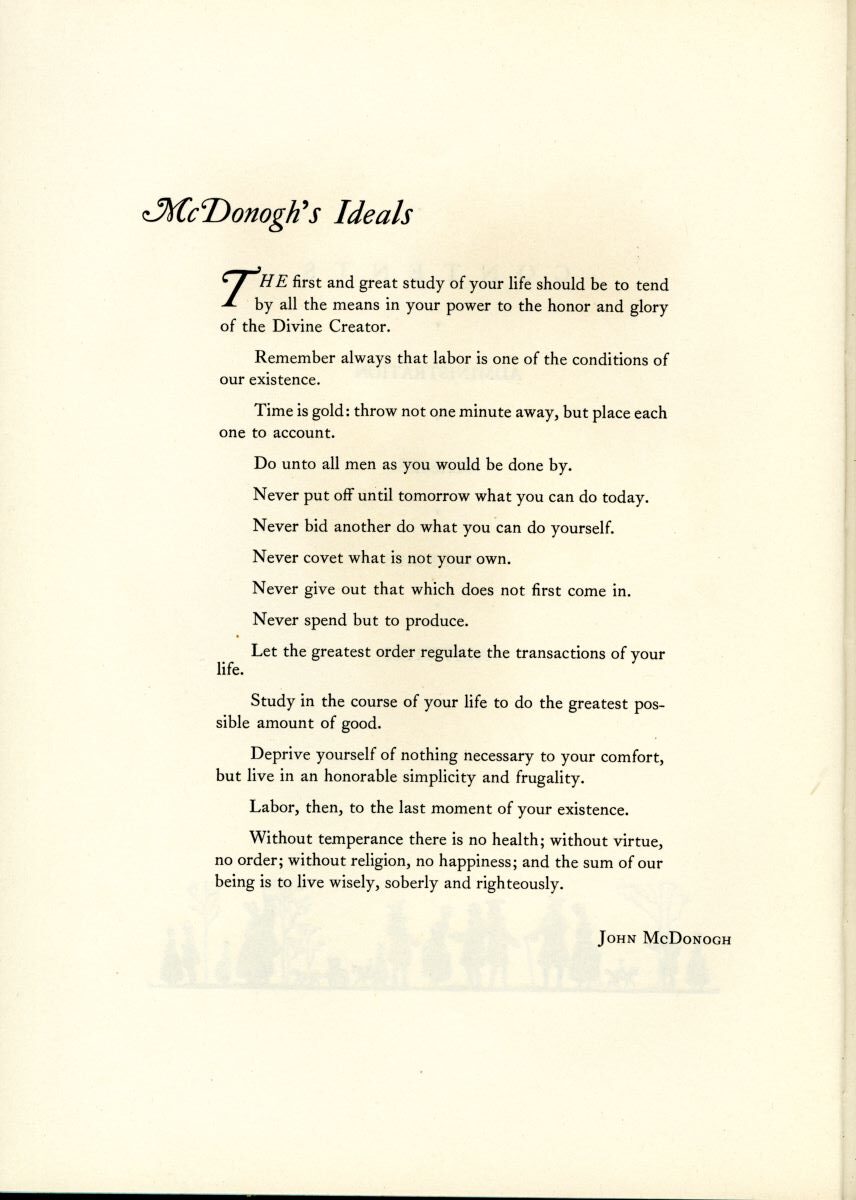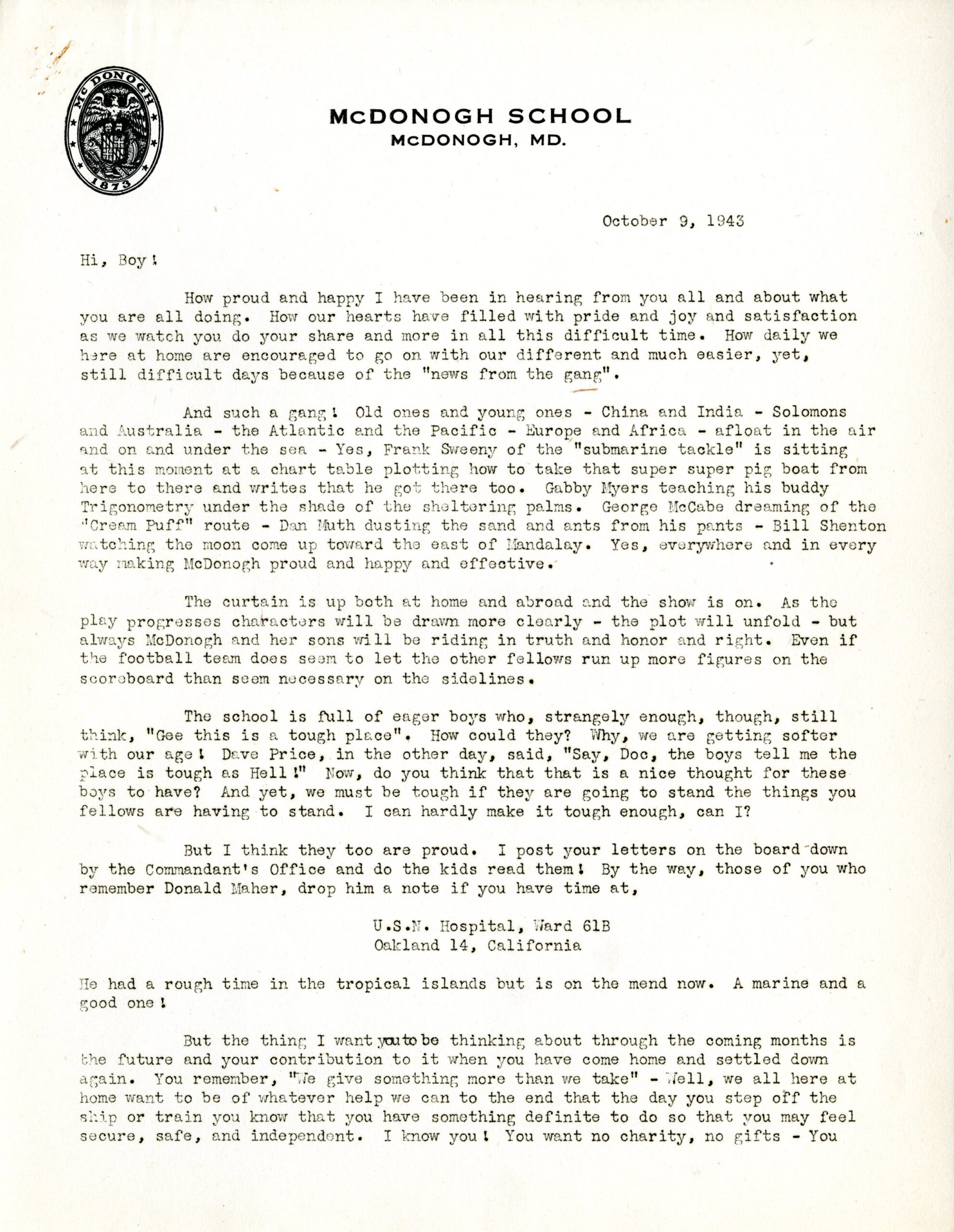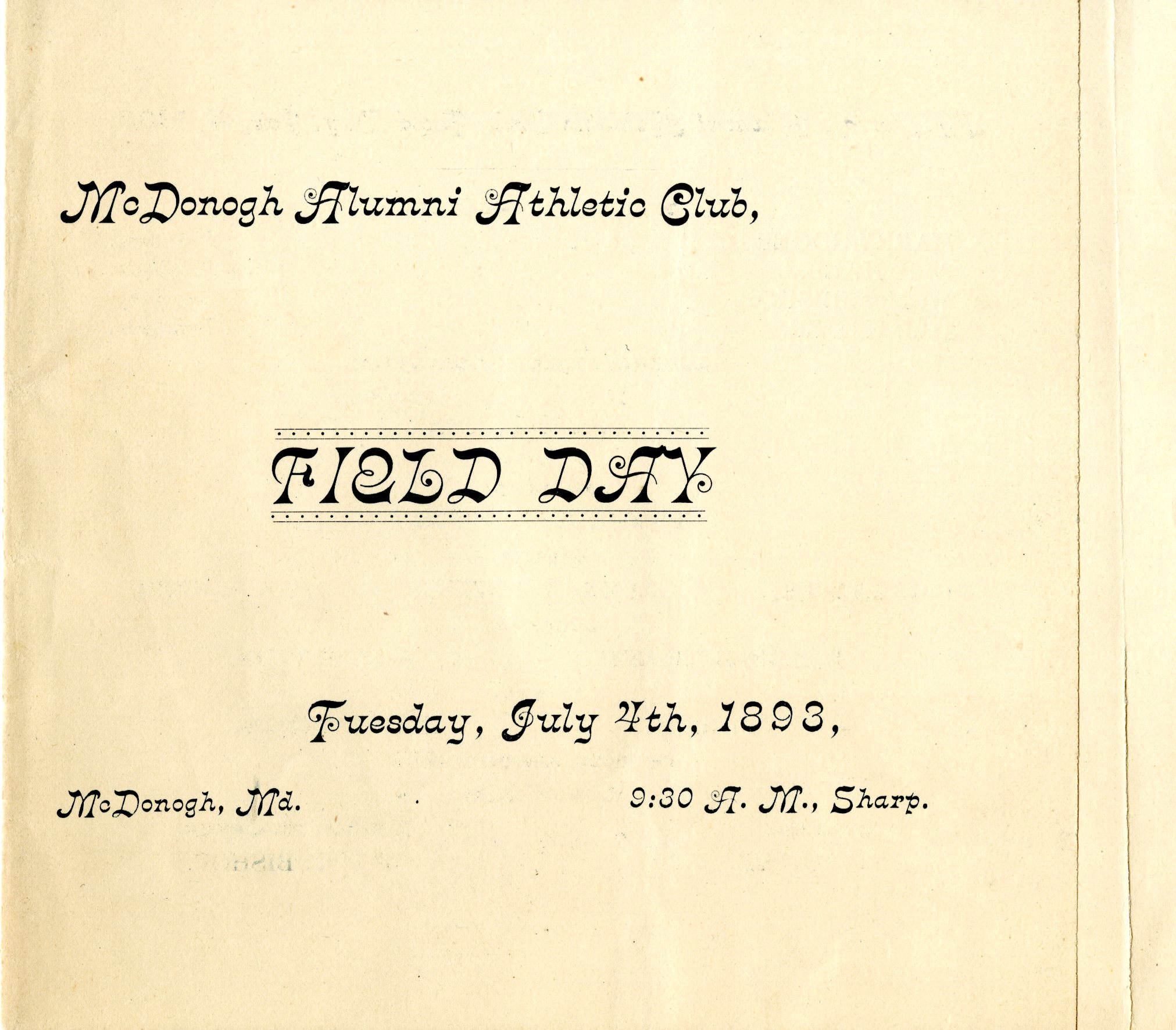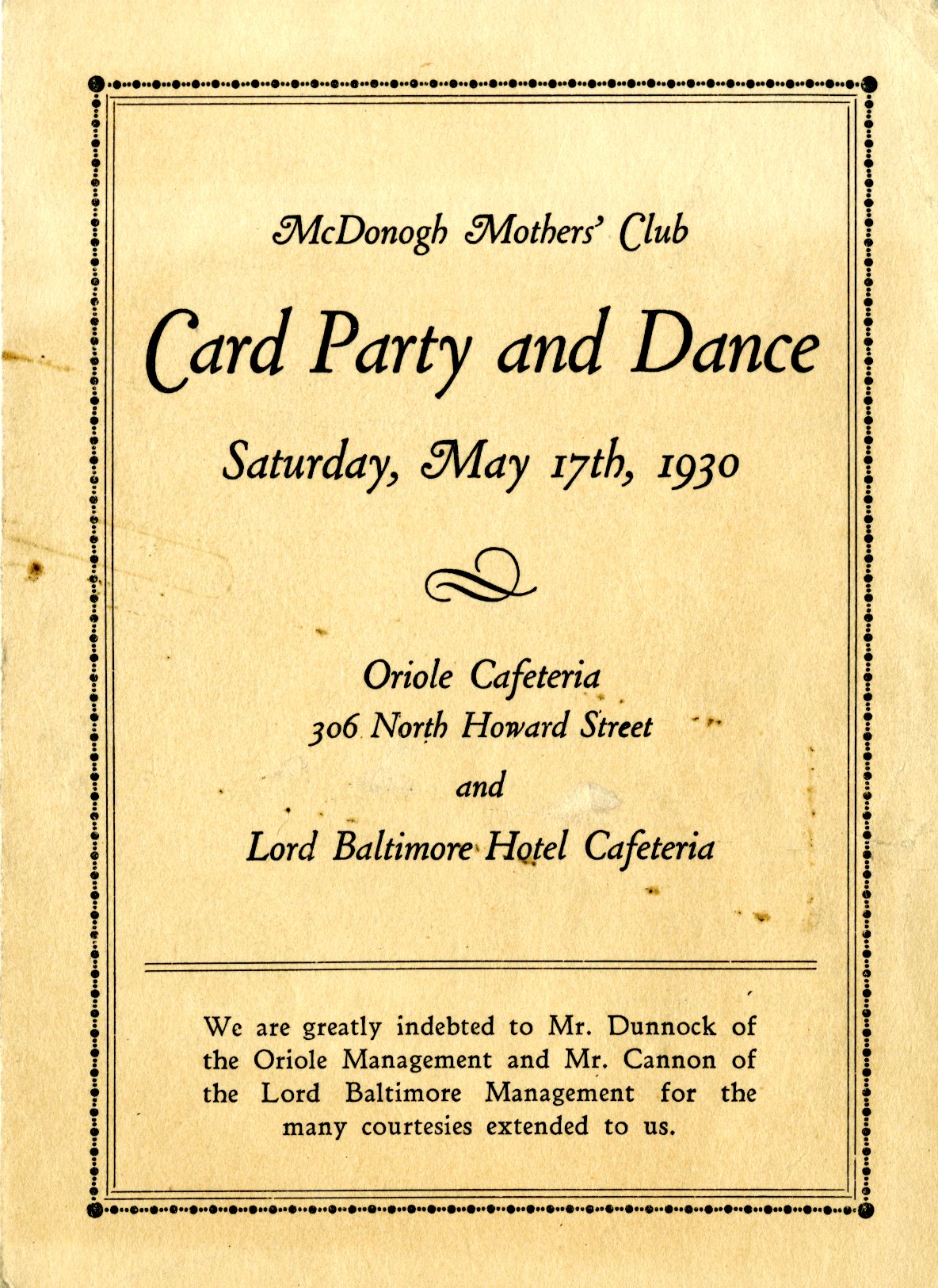Virtual
Artifacts Exhibit
Click on the images below to learn more about the item and the important role that it played in McDonogh's history.
Learn more about McDonogh School's rich history by visiting the archives online.
Visit ArchivesRules for Living
John McDonogh (1779-1850) was born in Baltimore but lived most of his adult life in New Orleans as a businessman, plantation owner, sometime-politician, and supporter of the American Colonization Society. His estate, which led to the creation of McDonogh School, was built through the use of slave labor. (Read about John McDonogh and Slavery in a 2021 essay written by Ane Lintvedt, a member of the Upper School History Department.)
McDonogh was known for his piety and frugality, financial and otherwise, derived from his Presbyterian beliefs. He was a hard worker, a bold leader, and a constant thinker, and his unrelenting devotion to work made him appear aloof to strangers and even close friends. These ideals and visions guided his action in his personal and business life, and in 1804, at the age of 24, he expressed his philosophy in his Rules For Guidance in My Life.
Freshman Cap – 1933
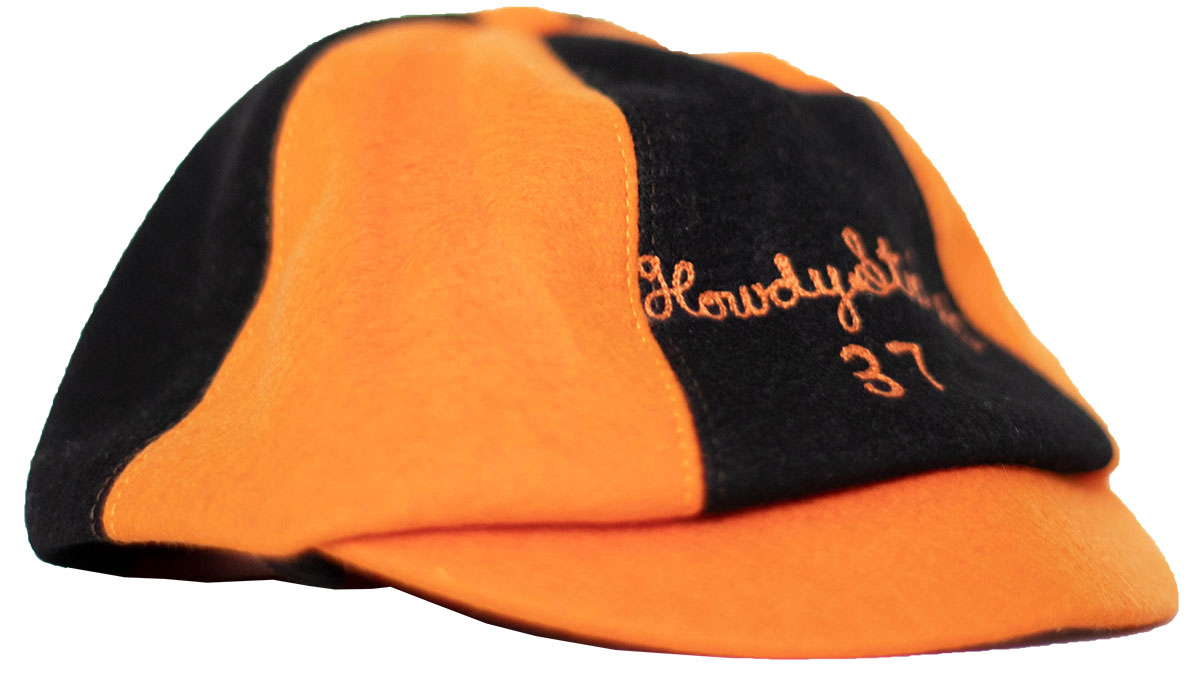
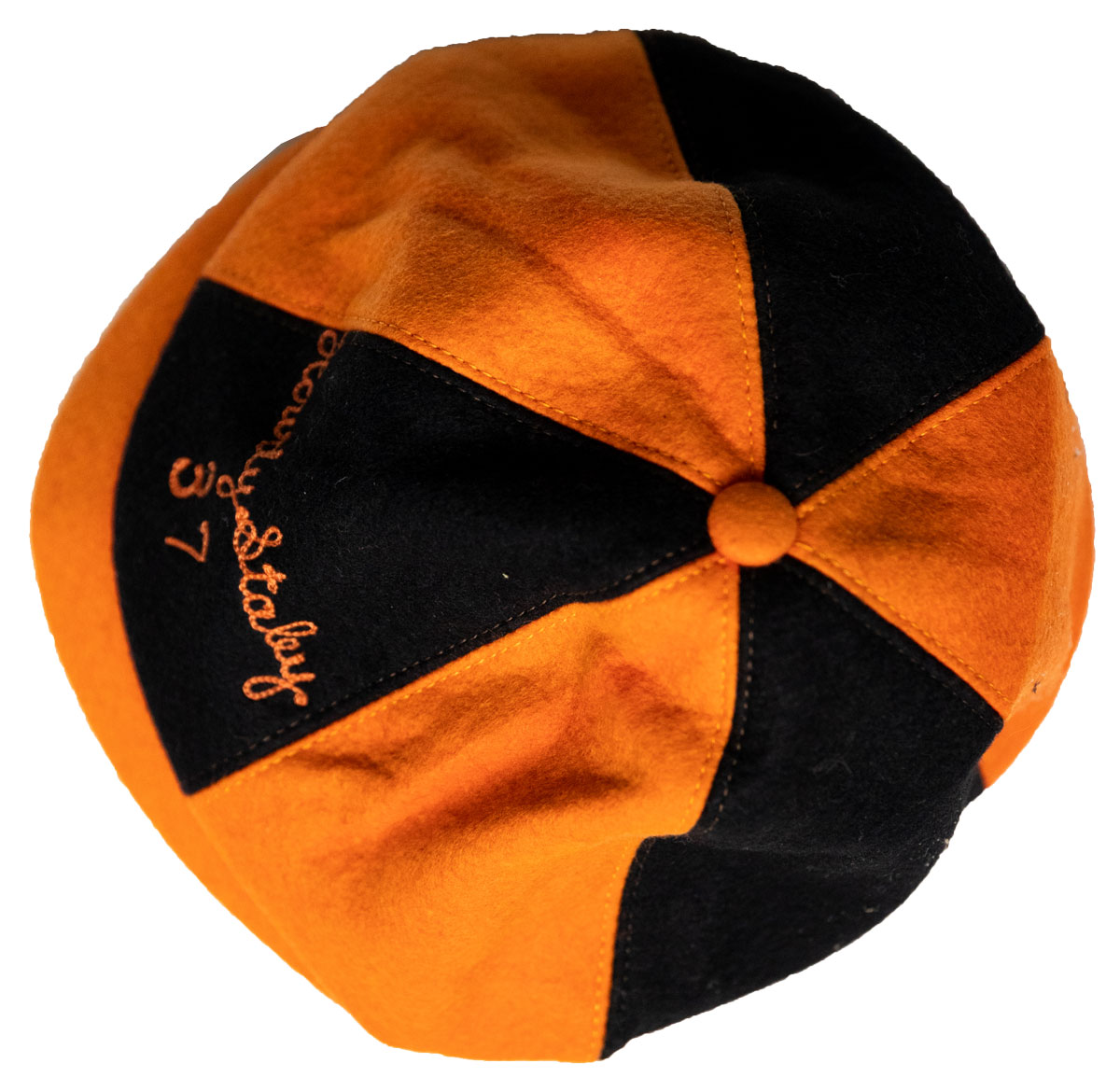
The cap depicted is the freshman cap of Howard ‘Howdy’ Staley 1937. This cap was given to Staley upon entering the Upper School, delineating him and his fellow classmates as freshmen. The cap’s striking orange and black coloring reflects the school’s colors, which were selected in 1893 by two students who chose the color because of the notable population of Maryland Oriole birds on campus.
Wooden Bowl – 1913
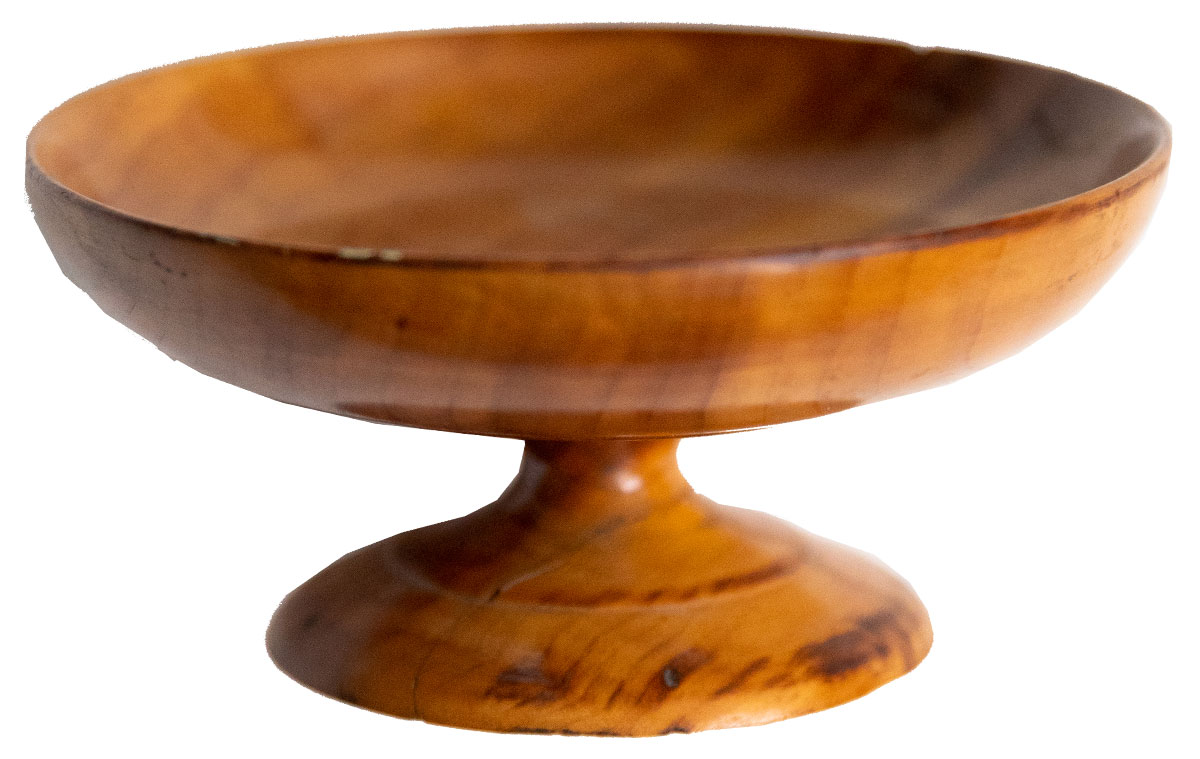
This wooden bowl was created in 1913 in McDonogh’s carpenter shop by H. Beale Rollins 1915. The carpenter shop was an important part of McDonogh’s working campus in its early days; the boys were responsible for building and maintaining various buildings and other structures on campus. Although this piece is a smaller example of the work done in the carpenter shop, it represents the shop’s importance to the early curriculum. Rollins made a monumental impact on the school as an alumnus. In 1967, Rollins was chosen as the first Fellow of the John McDonogh Foundation, reflecting Mr. and Mrs. Rollins’ status as the largest benefactors in the school’s first one hundred years and their many contributions to the McDonogh community.
Robotic Arm Picture – 2015

The McDonogh Robotics Team was established during the 2012-2013 school year. Led by teacher Kim Smith, the team proved very successful in its first year, winning the Rookie All Star award and competing in the World’s Competition in St. Louis, MO. The team continued to grow with the opening of the Fader Innovation Center in 2016, giving members the tools and space they needed to be even more successful. The robot arm displayed here is from the 2015 competition robot. The Robotics Team has left a lasting impression on alumni and faculty alike, such that this robotic arm served as ring bearer in an alumni wedding on March 14, 2015. The robot’s arm is currently displayed in the Fader Innovation Center along with a photo of the robot with the happy couple.
The McDonogh Uniform – 1916
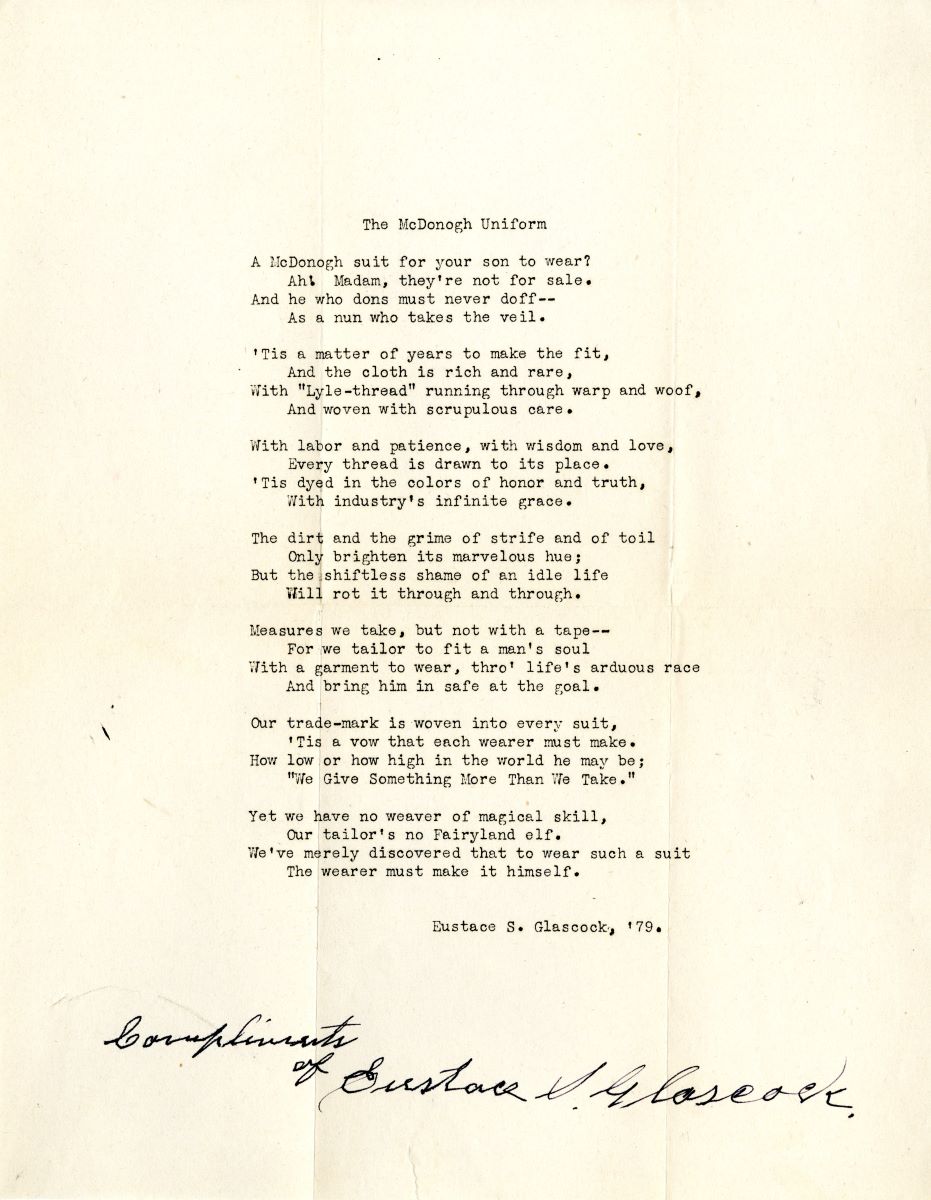
At age 11, Eustace S. Glascock entered McDonogh School in 1874 as “Boy #78.” Upon graduating in 1879, he was admitted to the United States Military Academy–the second boy to enter a major college upon the recommendation of Principal William Allan. It was not until 37 years later that Glascock wrote his now iconic poem, The McDonogh Uniform. This tribute to the uniform—that captures, in an extended metaphor, the literal and figurative meaning of the cloth that endeavored to wrap each McDonogh boy in honor—appeared in an October 1916 issue of the school newspaper, The Week. In the late 1920s, Hall Duncan, an Upper School teacher, was moved to create the McDonogh Seal, which is featured on many Legacy covers, on all military uniform buttons, and now, as a patch on student blazers. In the design of that seal, Duncan used six stars to represent the six values Glascock enshrined in stanza three of the poem—labor, patience, wisdom, love, honor, and truth.
Farm Journal – 1895-1898
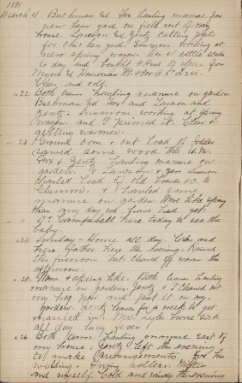
The McDonogh Educational Fund & Institute was founded in 1873, per the will of John McDonogh, as “a school farm on an executive scale, for the destitute, and the poorest, of the poor, male children and youth.” Most boys lived at the farm school year-round, with only short breaks at Christmas and during summers. Along with a few hired farmhands, the boys performed all manner of farm chores; they harvested and threshed wheat, picked and shucked corn, tended orchards, gardens, livestock, and more. In April 1892, John Fringer was hired as the superintendent of the school’s farm and became the Superintendent of Buildings, Grounds, and Repairs in 1914 before leaving the school a year later. Fringer kept a daily journal documenting agricultural and other farming-related activities. Most of his entries also include weather observations and occasionally document school events, such as Commencement and Fourth of July celebrations. View the 1895-1898 farm journal by visiting the online archives and selecting RG-01: Early McDonogh.
McDonogh Forever Campaign Trowel – 2012

This commemorative trowel is from the Cornerstone Laying Ceremony for the Naylor Building, which took place on April 12, 2012. Donning orange construction caps, the entire school watched as a crane lowered the cornerstone, realizing McDonogh’s future in the 21st century. The McDonogh Forever Campaign redefined the school’s campus through major physical improvements like the Edward St. John Student Center and the Naylor Building for science, technology, engineering, and math. The generosity of donors like Edward St. John, Irvin Naylor ’54, Henry Rosenberg ’48, and many others helped McDonogh modernize its campus. In place of the former Lamborn Hall, these two buildings are positioned along the Rosenberg Campus Green, which is now the heart of McDonogh’s revitalized campus design.
Facemask from COVID-19 Pandemic – 2020
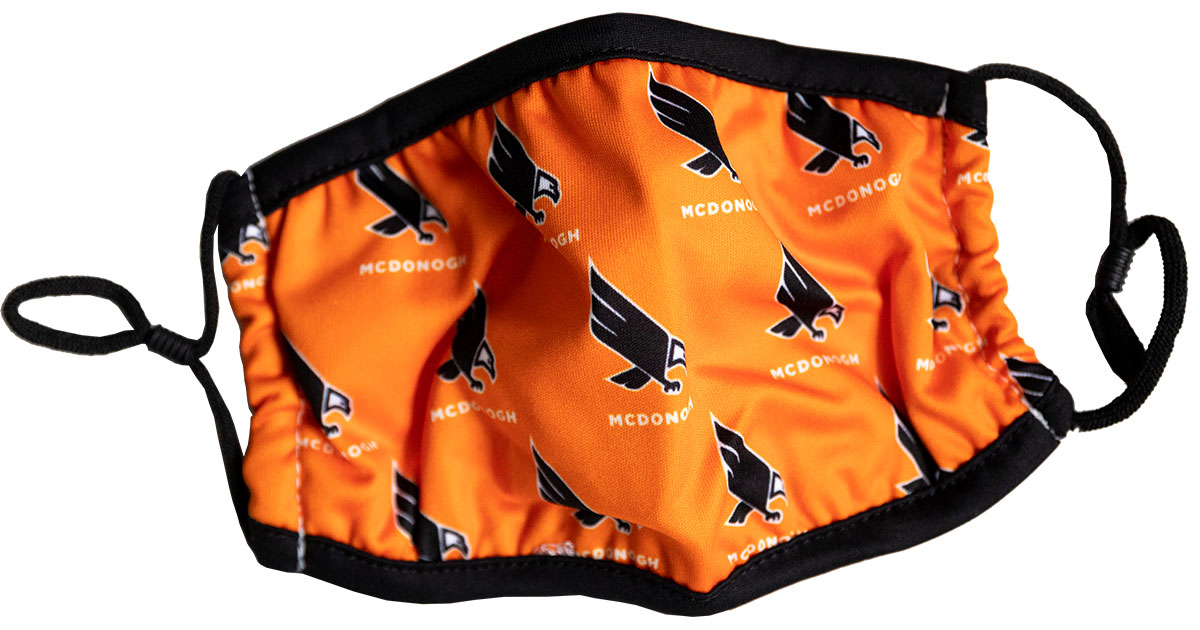
The COVID-19 pandemic upended global society, and McDonogh School was certainly not spared of the significant disruption to daily life. Because of how deadly the virus was, McDonogh was forced to use virtual teaching methods at the beginning of the pandemic in March 2020 and parts of the following school year. When students did return to campus, all members of the community were required to wear a face mask, much like this one, to protect themselves and their peers from contagion. The McDonogh Eagle’s design on this face mask reflects the school’s shift to a new spirit mark in 2018, which is still the dominant image today.
Oil painting of Allan Building by E. Carey Kenney
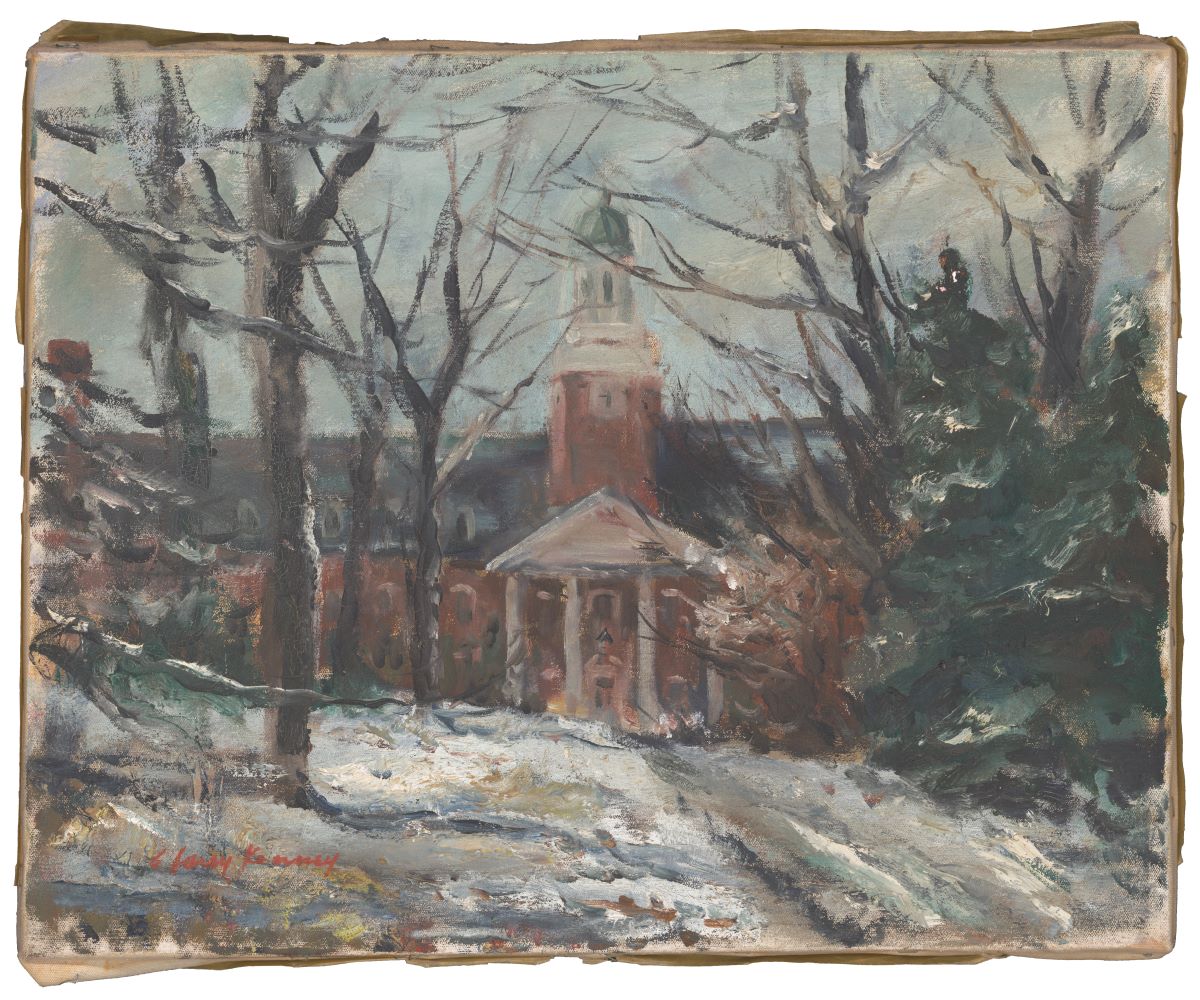
Edward Carey Kenney accepted a job at McDonogh School in 1947 to develop and head the school’s Art Department. This position was a perfect fit: teaching students during school hours and then spending his extra time painting the school’s 800 acres of divine flora. Along with his many landscapes of the school campus, he painted portraits of numerous McDonogh headmasters, teachers, and students. Kenney painted nine historical panels of the school, and, most notably, the three murals that grace the Lamborn Memorial Fieldhouse. He also coached the rifle and tennis teams and finally retired in 1980. Kenney continued to visit and be involved with McDonogh after retirement, having several exhibits of his art over many years at the school. McDonogh produced a book titled E. Carey Kenney’s McDonogh showcasing his McDonogh portraits, landscapes, panels, murals, and many drawings.
McDonogh Patrons Club Cookbook – 2001
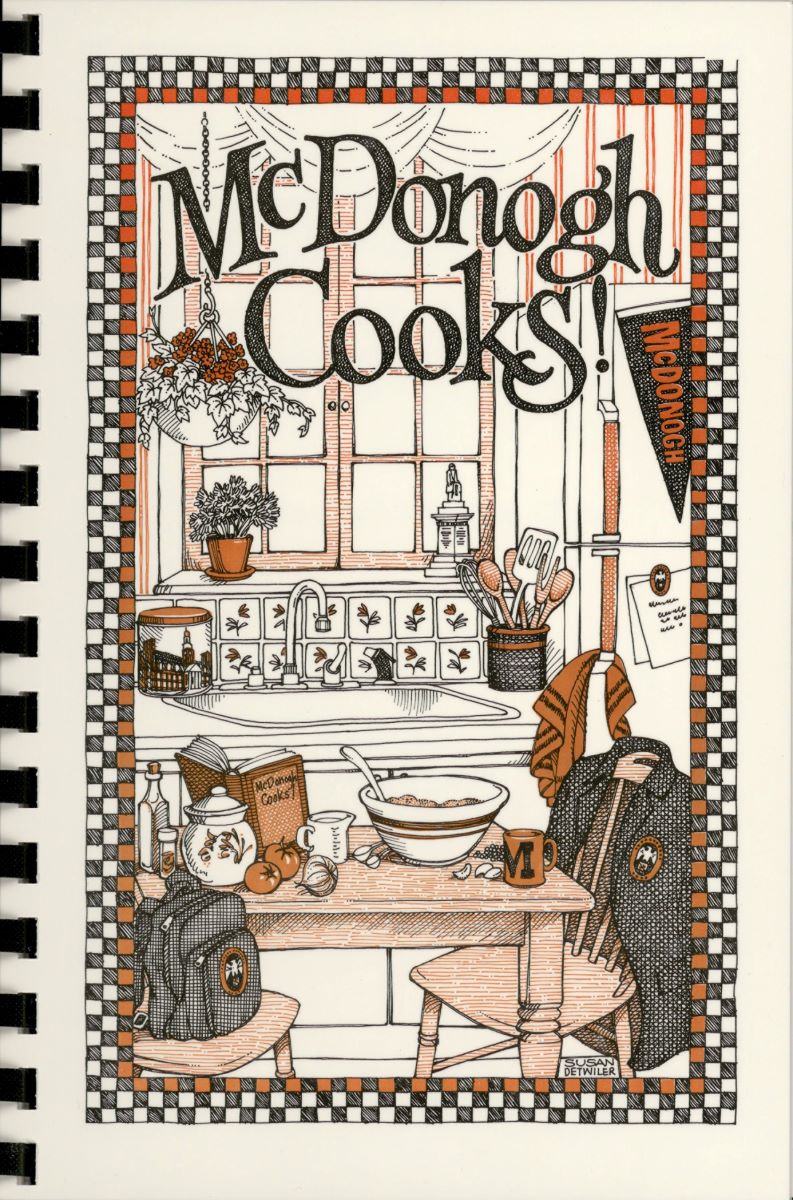
The Patrons Club was an organization of parents and friends that aimed to promote the interests of the school through fundraising and input on school policy. The Patrons Club was formerly the Mothers’ Club, which ran from 1923-1931 and is known today as the McDonogh Parents Association. The Club’s Executive Board informed school policy by representing parents on important topics like coeducation, dress code, and college counseling. It also made financial contributions by funding scholarships, faculty fellowships, and classroom equipment that were not covered by the school’s budget. Serving as a fundraiser for the club, this cookbook is a collection of recipes from the McDonogh Family to correspond with the Multicultural Day Celebration that the club hosted for several years. The recipes capture McDonogh’s diversity through food as an expression of the many diverse cultures and ethnicities composing the community, but the recipes also impart a Mid-Atlantic flair such as Maryland crab dip.
McDonogh vs. Gilman Game T-Shirt – 1995


McDonogh School and Gilman School have a long-standing rivalry on the gridiron, beginning with the first annual matchup in 1914. The annual football game is the pinnacle of school spirit as a pep rally and countless orange and black decorations mark the occasion. Years ago, students would decorate McDonogh’s school buses to celebrate, and as students disembarked from their bus the morning before the game, they would step on a greyhound “dummy” as a symbolic gesture of McDonogh stomping on Gilman on the gridiron. A nod to this tradition, the t-shirt from 1995 portrays the McDonogh Eagle stepping on the Gilman Greyhound. Although the rivalry is competitive, it is ultimately a friendly competition between two institutions who value the role of athletics in developing students into well-prepared young adults.
Decorative Plate, Odessa Exchange Program – c.1987

Beginning in 1987 under the guidance of Upper School history teacher Dave Harley, a delegation of McDonogh students engaged in a yearly exchange program with School 119 in Odesa, Ukraine. Given the broader context of the fall of the Soviet Union and the Cold War, McDonogh students found the exchange program an enlightening opportunity to learn about Ukrainian culture and erase stereotypes they held about their Soviet counterparts. McDonogh students had the opportunity to visit Moscow, Kiev, and Leningrad on the inaugural trip in 1987, but they also had the chance to experience daily life by staying with Ukrainian families and going to a Ukrainian school. Later that year and in subsequent years (until the program dissolved in 2008), students from School 119 came to attend McDonogh and stayed with McDonogh families for a few weeks. This platter was given as a gift from School 119 to Headmaster Bo Dixon, commemorating the relationship between the two schools.
McDonogh Fair Cattle Ribbon – 1950
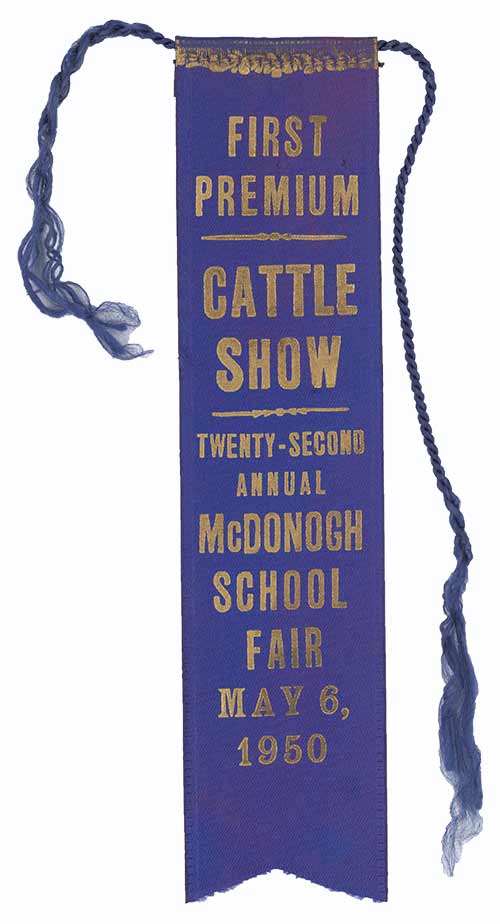
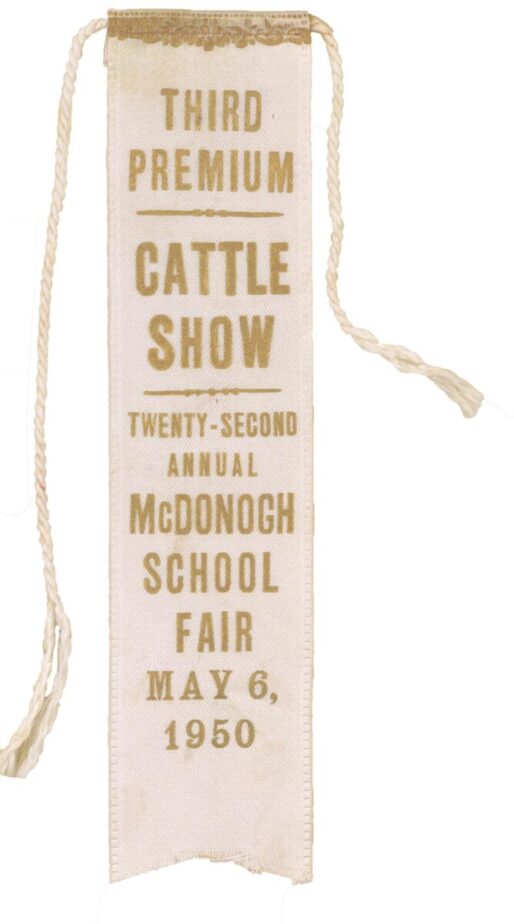

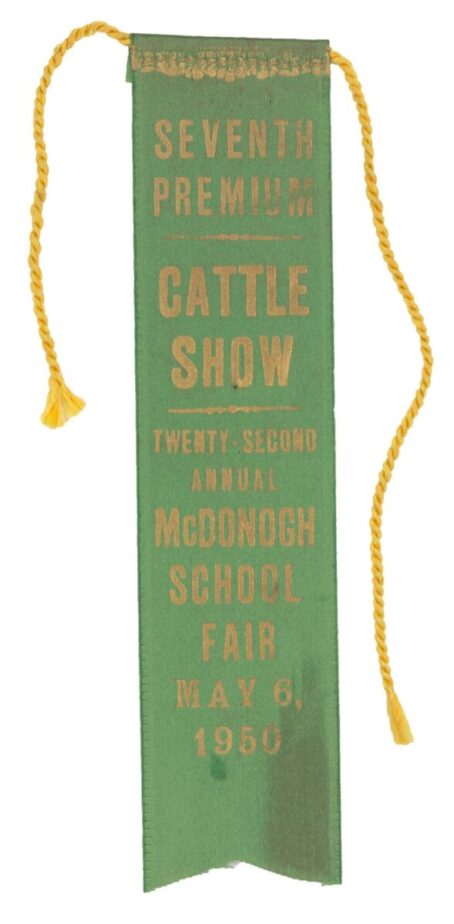
The first McDonogh Fair took place on May 4, 1929, as an Alumni Day event where cadets could showcase their livestock. However, from 1930 through 1953, the McDonogh Fair was separated from Alumni Day, allowing the McDonogh community to showcase its animal husbandry program. When the Fair returned to campus in 1954 in conjunction with Alumni Day (it had been held at the Timonium Fairgrounds in years prior), it started to grow and include other attractions that brought folks from across Maryland. Rides, refreshments, antique car shows, and balloon ascensions became the main events of the fair as McDonogh’s livestock population dwindled. The fair continued to be a central element of McDonogh’s culture until the “Alumni Day Fair” ended after the 1978 school year.
Aerial Photo of McDonogh – c.1960-1965

Since its founding in 1873, the McDonogh campus has undergone significant changes and continues to grow today. This aerial photograph from c. 1960-1965 provides a striking example of how the over 800-acre campus has changed in the past 60 years. In this photo, Allan Building stands atop Shell Road, Lyle Building is situated along the Flag Court, and Tagart Memorial Chapel is the centerpiece of the southeastern corner of campus. While these early buildings are still a part of the current landscape, other structures have been redesigned or replaced since this photo was taken. Edwards Gym has been replaced by the Burck Center for the Arts; the Rollins-Luetkemeyer Field House sits adjacent to Memorial Field House, and the Memorial to Those Enslaved and Freed sits along the south end of Allan Building.
Drill Day Program – 1954

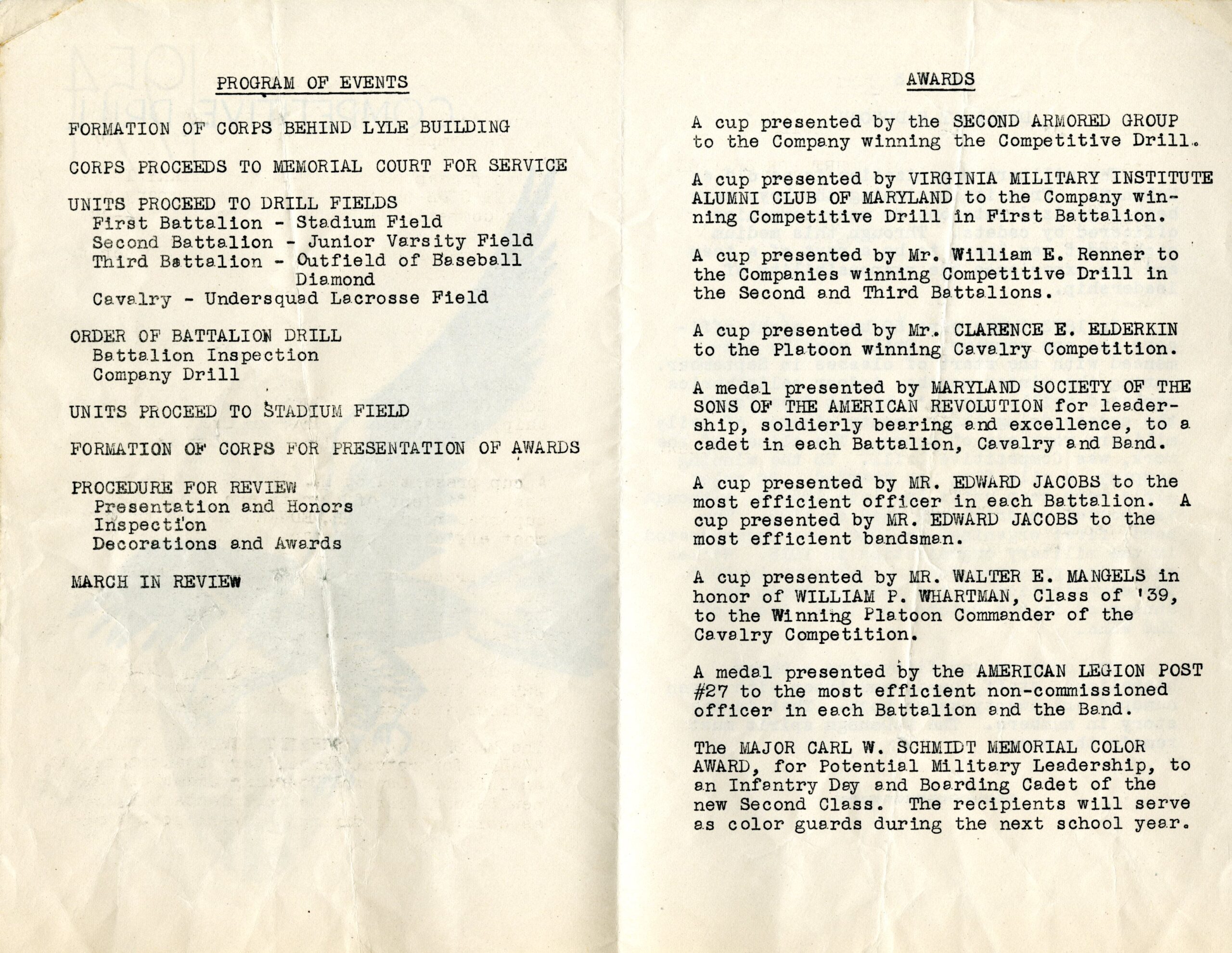
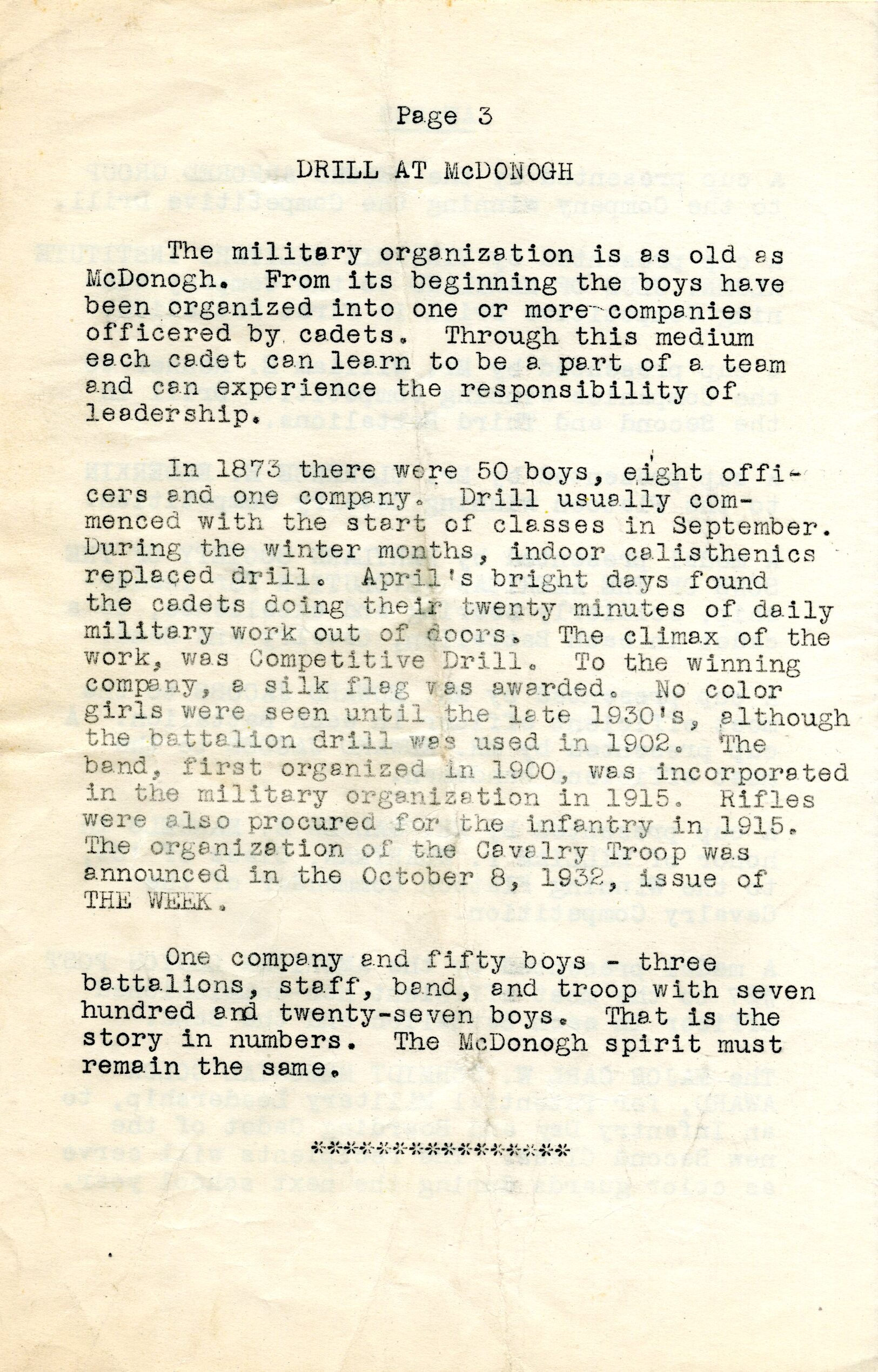
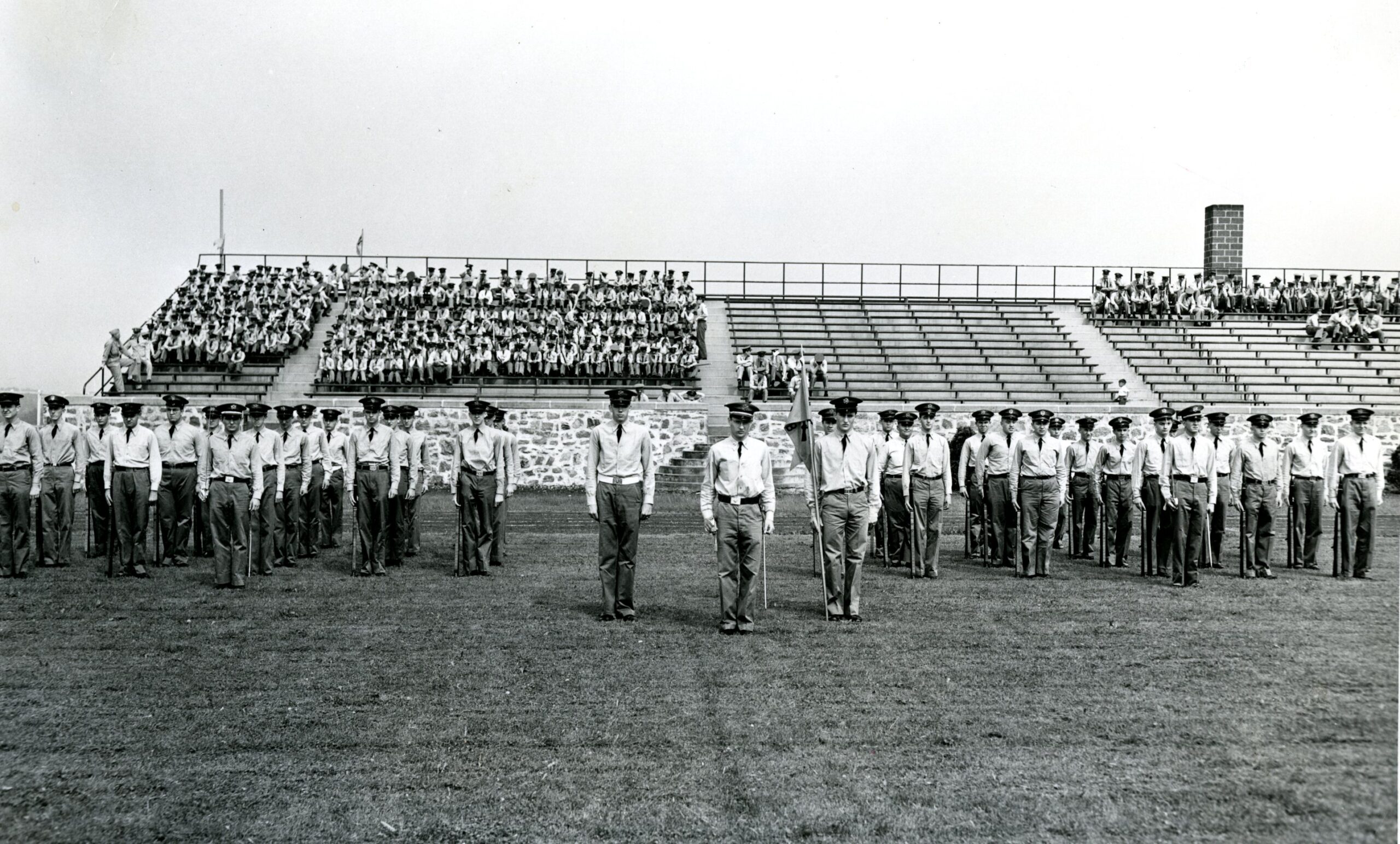
The annual Competitive Drill Day exercises exemplify the importance of the military program by emphasizing discipline, composure, and honor. Drilling had been a component of commencement exercises since the first closing ceremony in 1873, but the Competitive Drill Day emerged as a distinct event in 1937. At the end of every school year, the cadets would file into their troops and platoons to compete against one another in front of the school community. Along with the Cavalry Unit, there were three Battalions demarcating Upper, Middle, and Lower Schools with two companies in the Upper and Lower Schools and three in the Middle School. Within each battalion, the companies would compete against each other, with the most contentious being in the Upper School, which pitted boarders in one troop against “day-hops” in another. Cadets would head to their assigned drill fields to be reviewed and graded on appearance, manual of arms, and marching, with emphasis placed on appearance and cadence. Awards went out to the winning company commanders and specific individuals for “Leadership, Soldierly Bearing, and Excellence,” “Most Efficient Officier,” and “Most Efficient Non-Commissioned Officer.”
Letter from Lamborn to Boys in the Service – 1943


This letter dated October 9, 1943, was one of more than a dozen letters written between 1942 and 1945 by Headmaster Louis “Doc” Lamborn to McDonogh boys actively serving during World War II. These “form” letters not only kept alumni connected and informed about the latest news and day-to-day activities at McDonogh but also provided a sense of comfort which no doubt helped to maintain the morale among the boys while far from home around the world. Louis E. Lamborn began the longest-running tenure of any McDonogh School Headmaster when he was elected to the post in December of 1925. “Doc”, as he was affectionately known to both students and staff alike, served in that capacity for 27 years until his retirement in 1952.
New House Fire – 1928
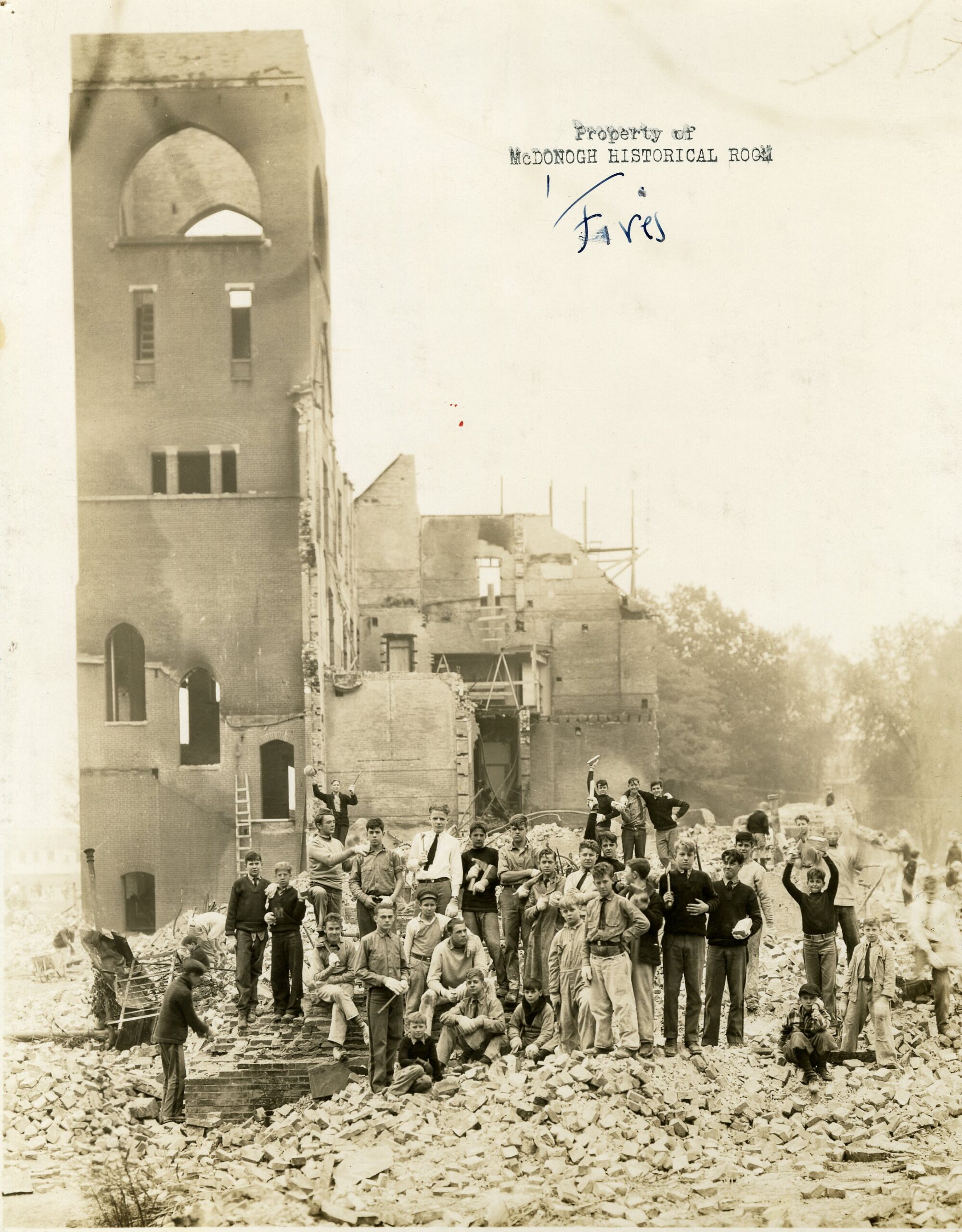
Thankfully, no one was injured, and students did not miss a day of school.

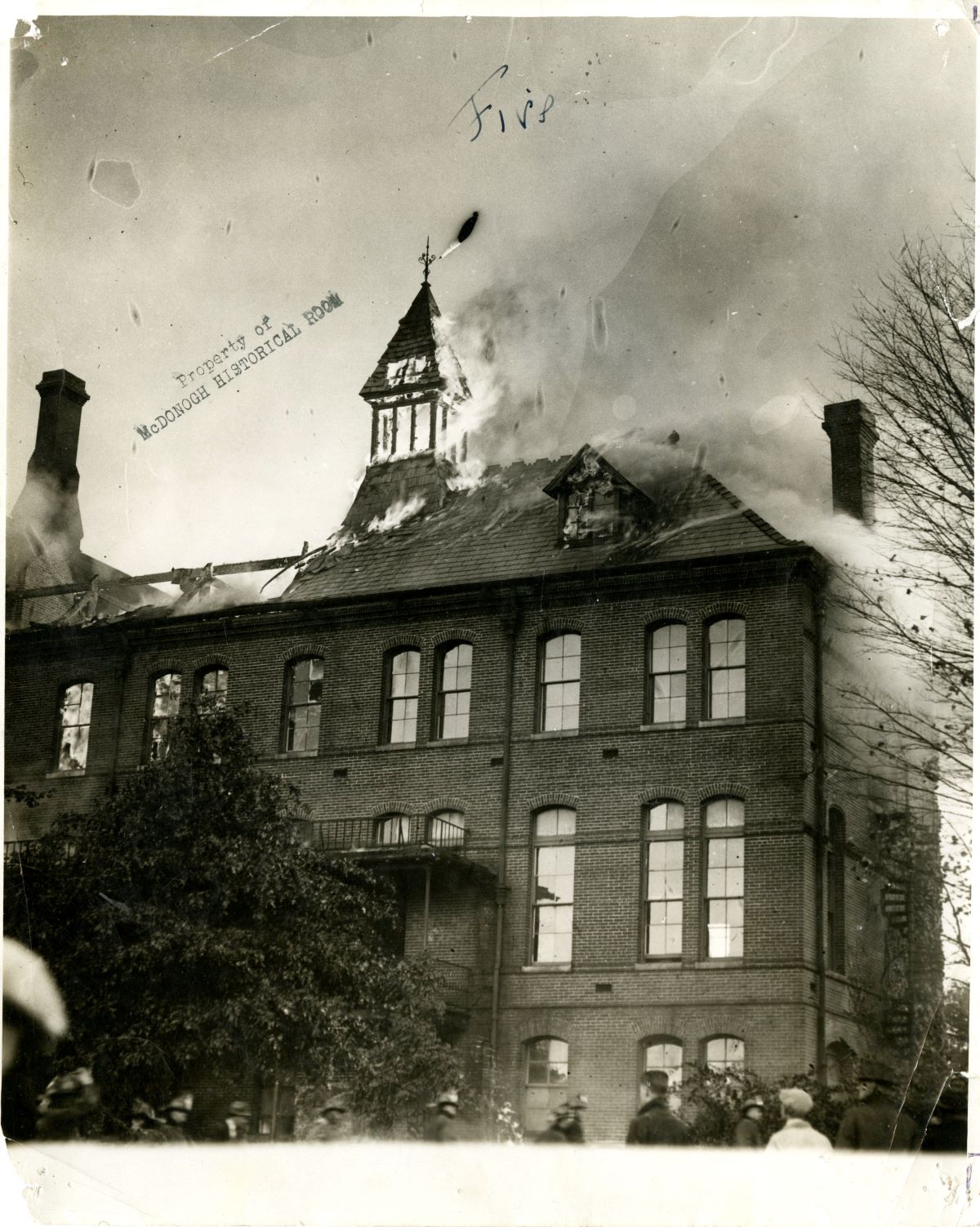
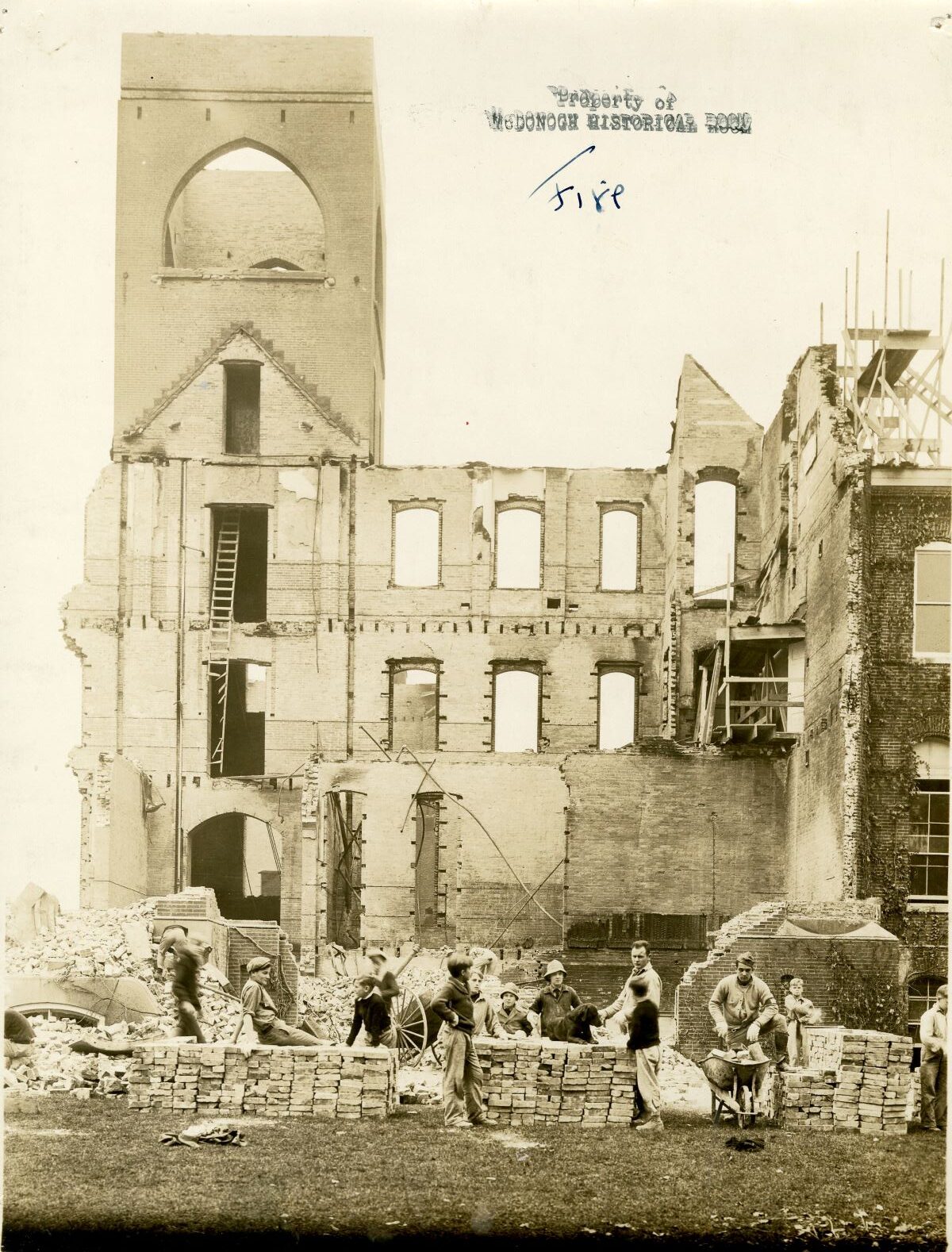

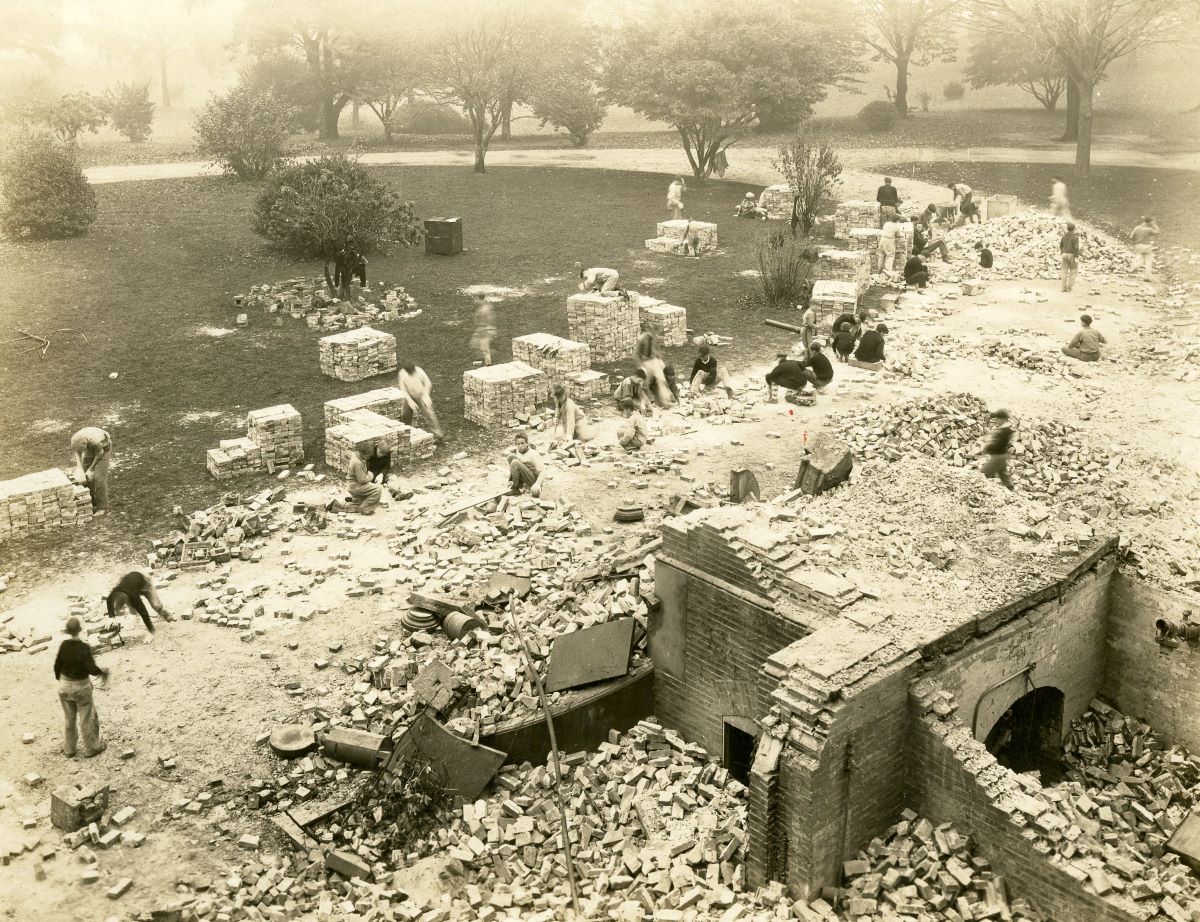

Boys searching day after
In the early morning hours of October 24, 1928, a fire raged through McDonogh School’s main building, known as “New House.” According to numerous newspaper accounts, the fire started in the linen room in the basement of the building’s west wing. Believing the fire was contained to the west wing, some faculty and older students entered the other dormitories and salvaged students’ clothing by throwing it out of the second and third-story windows, other groups saved books from the library, the school papers, the safe, and valuable portraits from the first floor.” However, unbeknown to all, the basement of the building was ablaze and the flames swept up an air shaft to the roof engulfing the center of the building. The ceiling caved in and flaming debris rained down. Nine hours after the fire was discovered, firemen still were pumping water into the structure to prevent the blaze from possibly spreading to the gymnasium and cottages surrounding the building. Thankfully, no one was injured and students did not miss a day of school. Read more on pages 38-39 in the Winter 2019 issue of McDonogh Magazine.
Letter from Marbury L. Councell 1910 – 1918





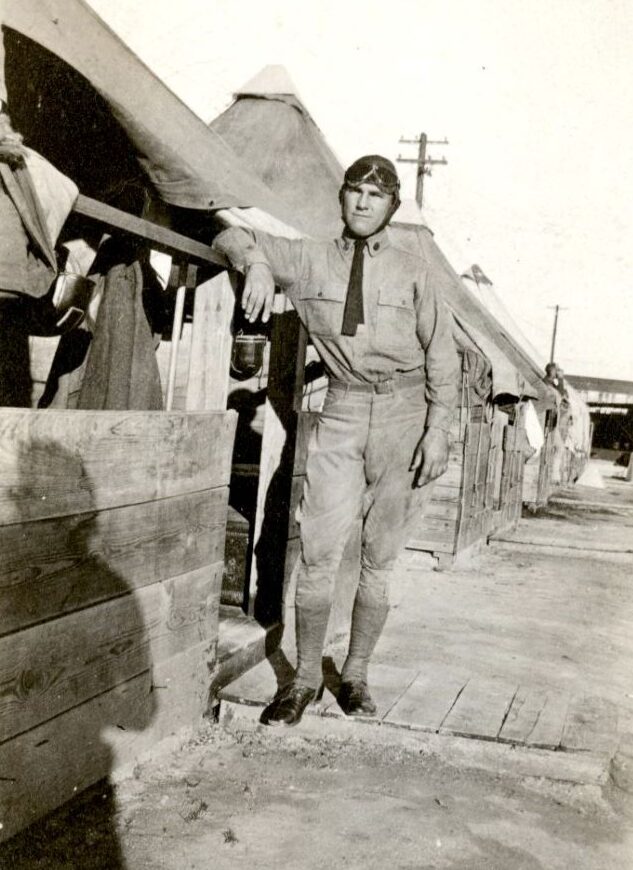
This letter, dated September 5, 1918, was written by Marbury L. Councell, Class of 1910, to McDonogh faculty member Duncan Campbell Lyle soon after Councell was commissioned as a bomber pilot during World War I. Affectionately known by both students and staff alike as “The Old Man,” Lyle maintained his close relationships with many of the boys—such as the one he had with Councell—through brisk and regular correspondence right up until his death in 1938. Additional letters from Councell can be found among more than 100 letters, postcards, and photographs in the McDonogh World War I Collection.
Athletic Association Field Day Program – 1893

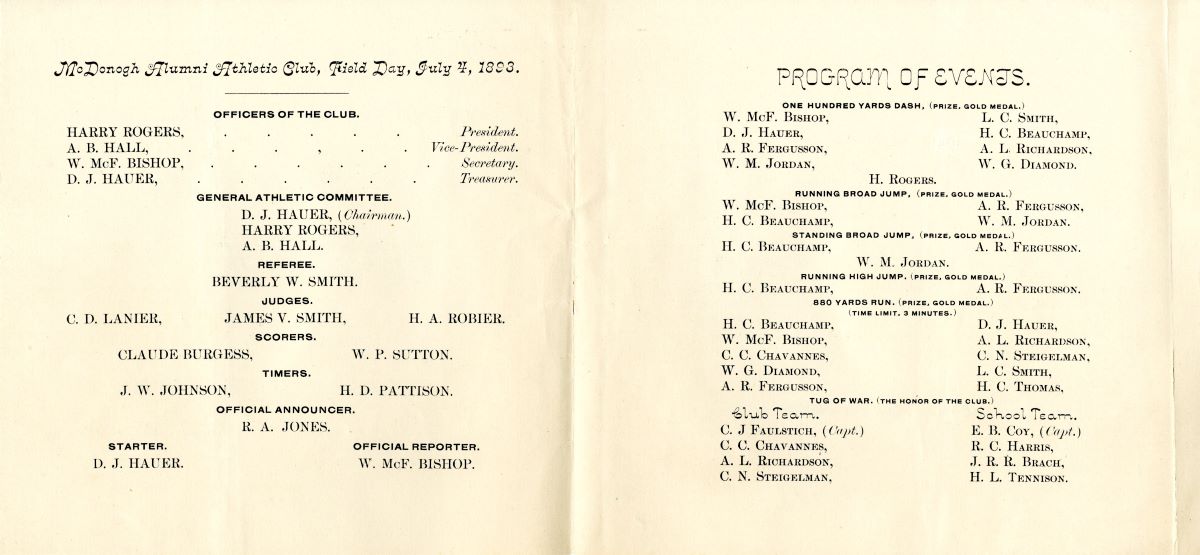
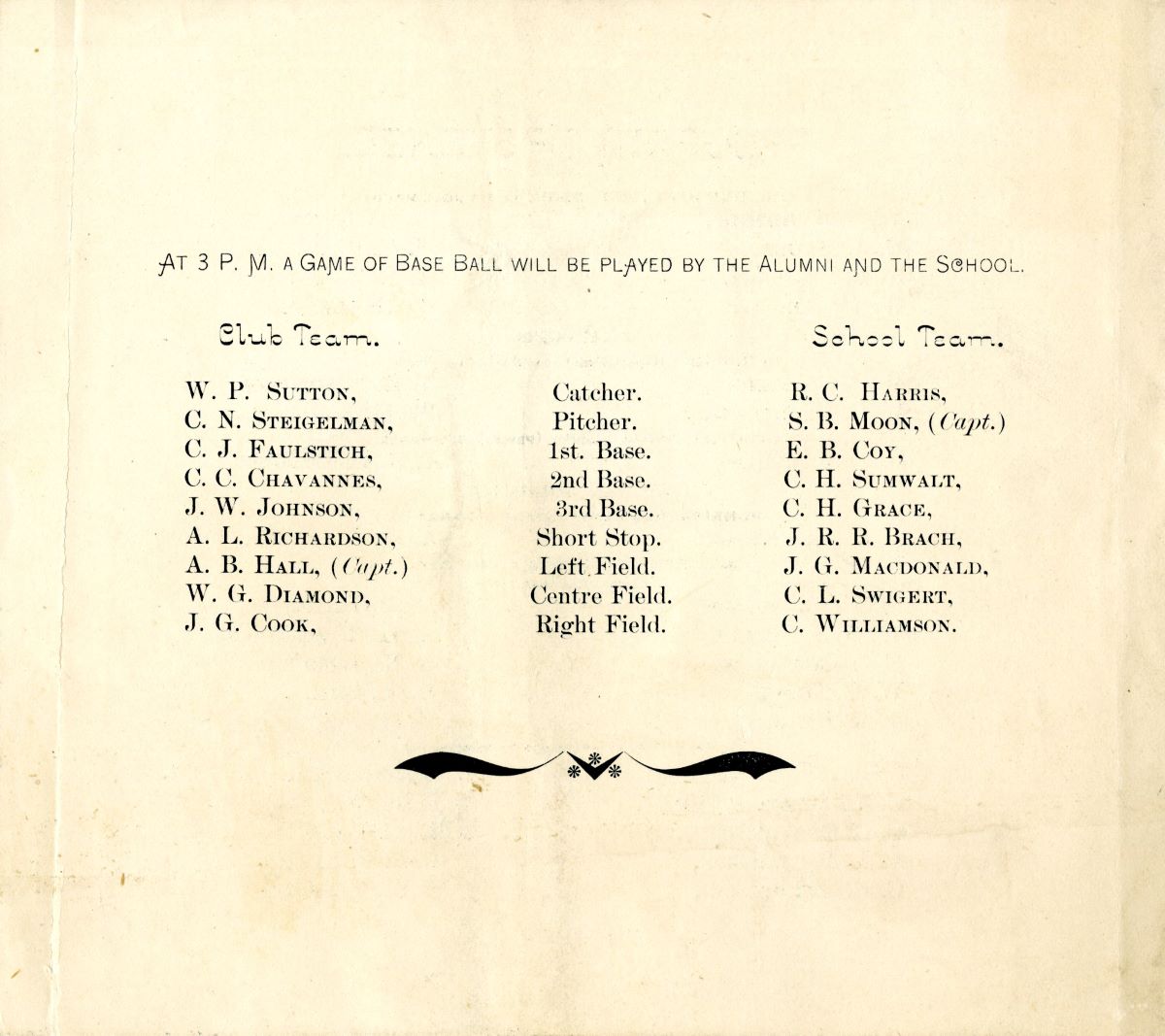
The first McDonogh Alumni Athletic Club Field Day competition was held on July 4, 1893, as part of the school’s annual Fourth of July celebration. Founded on December 10, 1887, by five McDonogh students, members paid an admission fee of 50 cents and a monthly fee of 10 cents to use the “old star troupe room” in the basement of Old Main, which went toward outfitting a small gymnasium. Within a month, there were 24 members in good standing and enough money to purchase a variety of equipment. The Association was also referred to interchangeably as the McDonogh Alumni Athletic Club, but it was not affiliated with the McDonogh Alumni Athletic Society, aka Alumni Athletic Club, which was established in January 1895 by alumni football players.
Portrait of Josepha Seldon Young (School Matron) – 1873
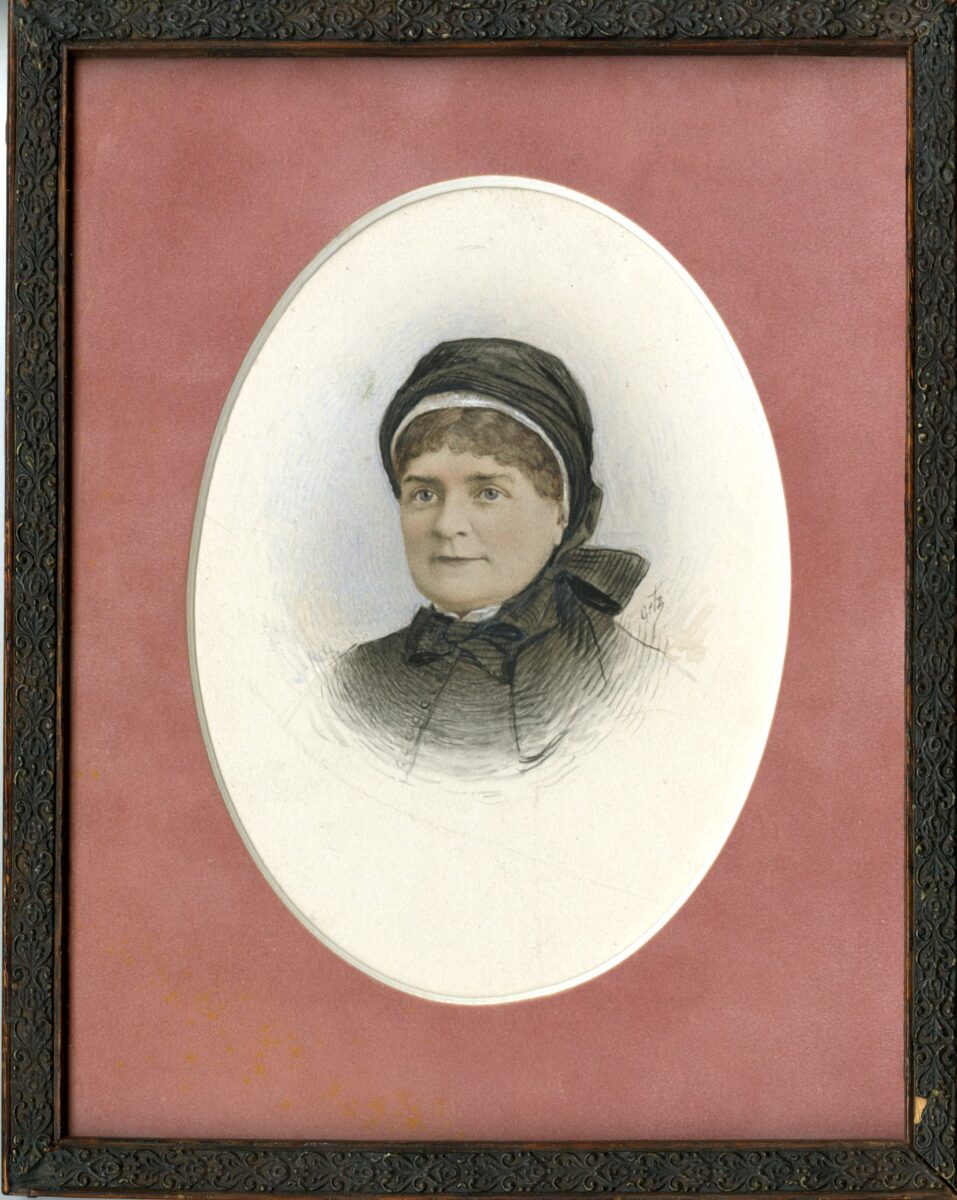
Many young boys would not have graduated from McDonogh if it were not for the motherly Josepha Young. Widowed at a young age, Mrs. Young came to McDonogh just nine days before the first 21 boys walked up Foxleigh’s Hill to open the school, and she quickly became a nurse, “foster mother,” cook, disciplinarian, and housekeeper for McDonogh’s first cadets. She is memorialized across campus with a commemorative window in the Tagart Memorial Chapel, a plaque dedicating an oak tree to her near Bowman House, a portrait of her by Carey E. Kenney, and this piece of artwork by Getz.
Ninth Alumni Association Banquet Program – 1889
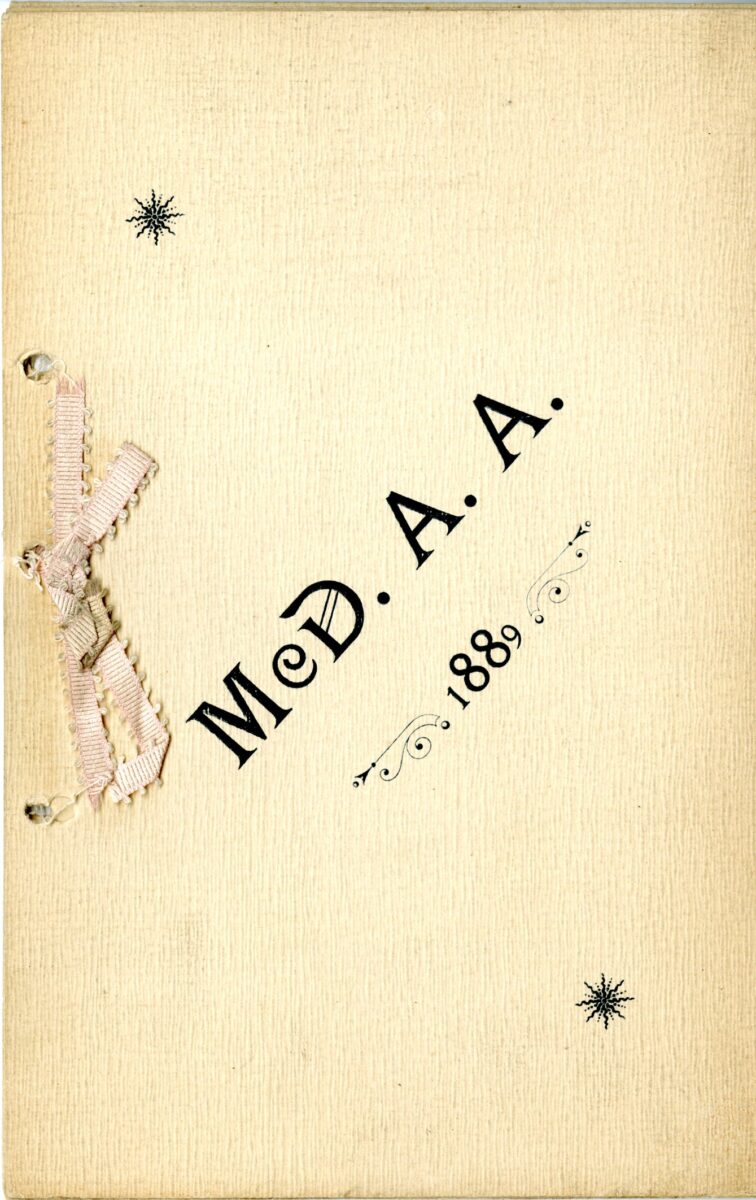
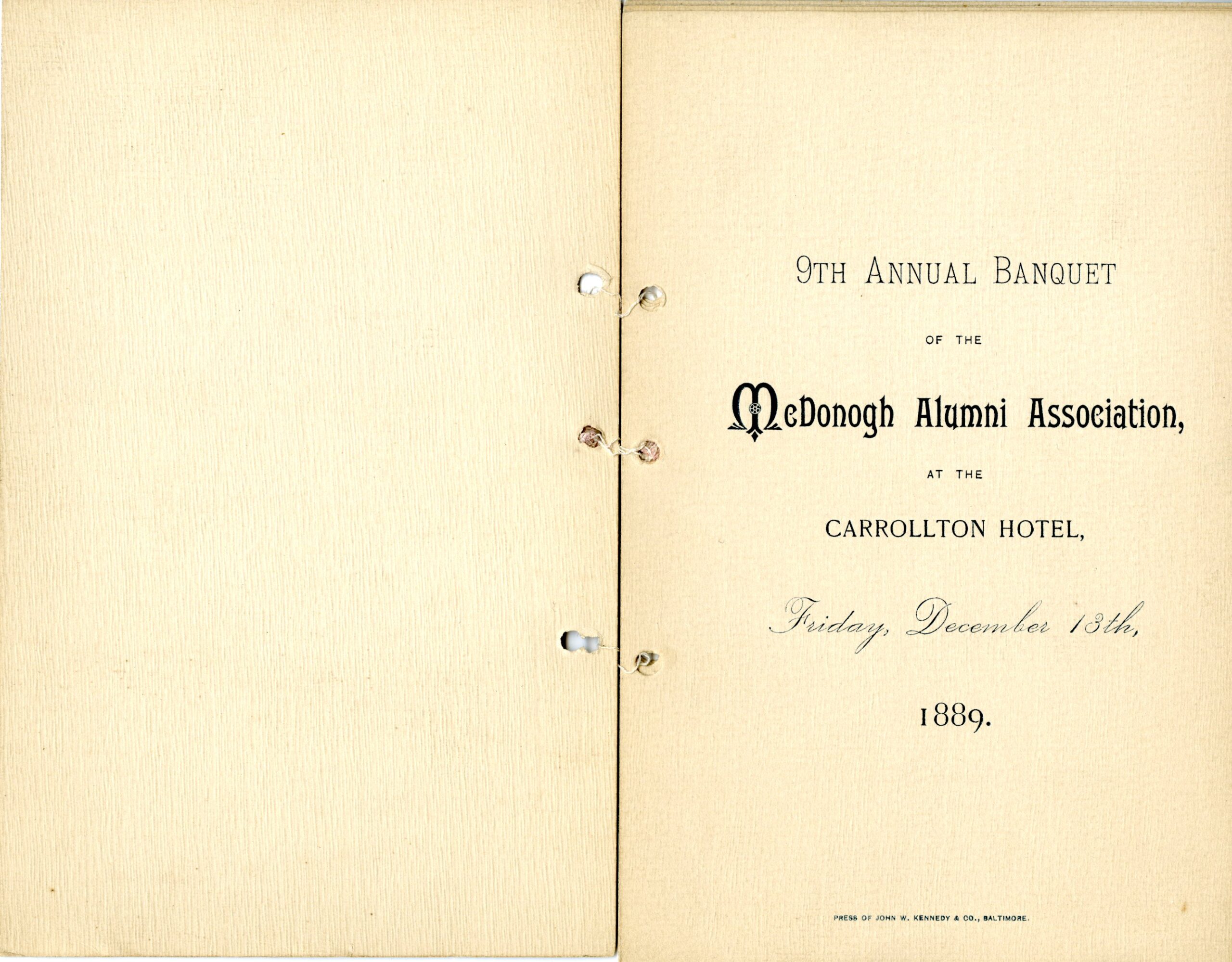
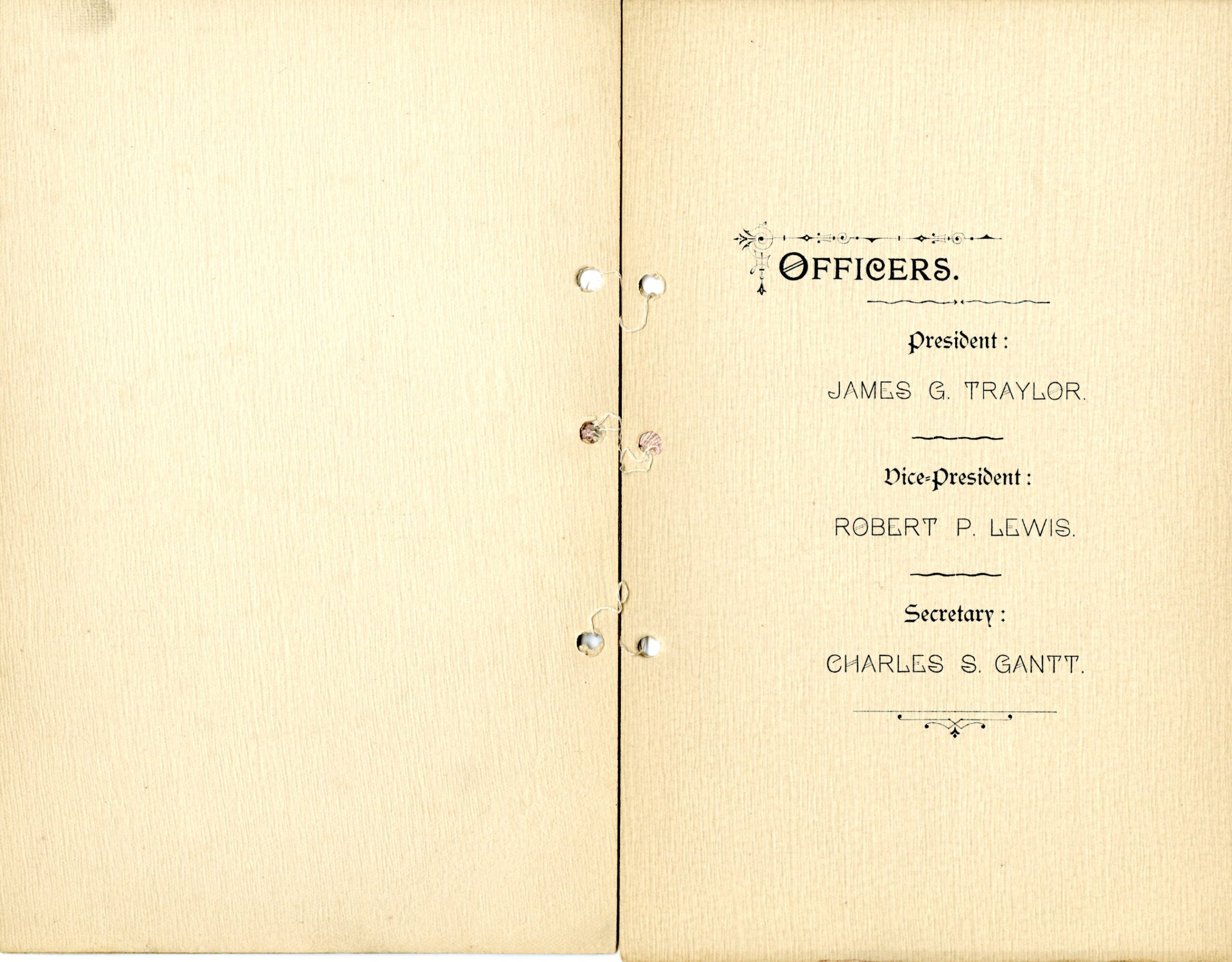


The McDonogh School Alumni Association (originally the Alumni Society) was founded on June 26, 1880, by a group of alumni whose main object, according to its constitution, was to provide “friendship and mutual help” to the school and its alumni. Initially, the association was focused on hosting monthly luncheons or banquets to bring alumni together in Baltimore, while out-of-town chapters provided similar opportunities for alumni living in other locations. This program from the Alumni Banquet at the Carrollton Hotel in Baltimore on December 13, 1889, captures the organization’s early fraternal focus, and its menu—featuring raw oysters and terrapin—emphasizes McDonogh’s location in the Mid-Atlantic region.
McDonogh Mothers Club Card Party and Dance Program – 1930



The McDonogh Mothers’ Club was formally organized on October 13, 1923, by a group of McDonogh mothers whose objective was to support the school mainly through financial contributions. Responsible for providing the school with new band instruments, its first school bus, grandstands for the drill field, and the outdoor swimming pool, the Mother’s Club hosted large events including oyster suppers and card parties to raise funds for these projects. The Club was reorganized and renamed the McDonogh Patrons’ Club in 1931 due to male interest, coinciding with the election of the first male president in 1931. This program is from a card party the club hosted on May 17, 1930, at the Oriole Cafeteria and Lord Baltimore Hotel in Baltimore. For the event, the Mothers’ Club sold tickets and refreshments to their guests, so the card party and dance served as a fundraiser but also as a get-together for McDonogh parents. The event was so successful that the club oversold its tickets, forcing the organization to add Lord Baltimore as an additional site and bus guests back and forth between the two locations.
Calvary Medal – 1941
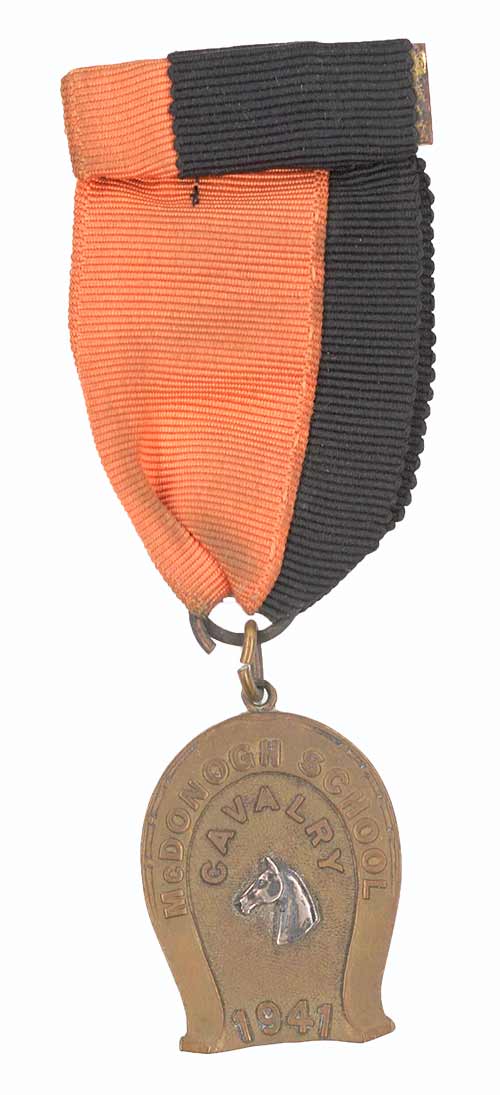
M. Morgan Rawlins ’43 was awarded this Cavalry Medal in 1941 while he was a member of McDonogh’s Troop A, 1st Platoon. Cavalry was an important aspect of the McDonogh experience at the time, combining its military program with its rich equestrian tradition. Founded in 1932, the cavalry allowed McDonogh boys to practice drills, maneuvers, and cavalry scouting tactics. In 1941, a second troop was formed, and the two troops competed at the annual Drill Day for the Elderkin Cup, an award given annually to the best platoon.
Military Cap Insignia – c.1910

Donated by the family of Walter Richter, Class of 1916, this cap insignia was an essential component of the McDonogh uniform. This specific edition of the insignia with the laurels surrounding ‘McD’ was last worn circa 1915. The insignia would be worn at the center of the cadet’s cap, right above the bill, and it was given to all cadets to wear as a part of their daily uniform. Much like in the United States military, the McDonogh uniform was a distinct element of McDonogh’s military program, differentiating it from similar boarding institutions and providing a source of pride for the boy. Wearing the McDonogh uniform required significant attention to detail because shoes, buttons, and insignia all had to be polished and each article of clothing had to look crisp.
Murder on the Nile Hand Fan Playbill – 1978
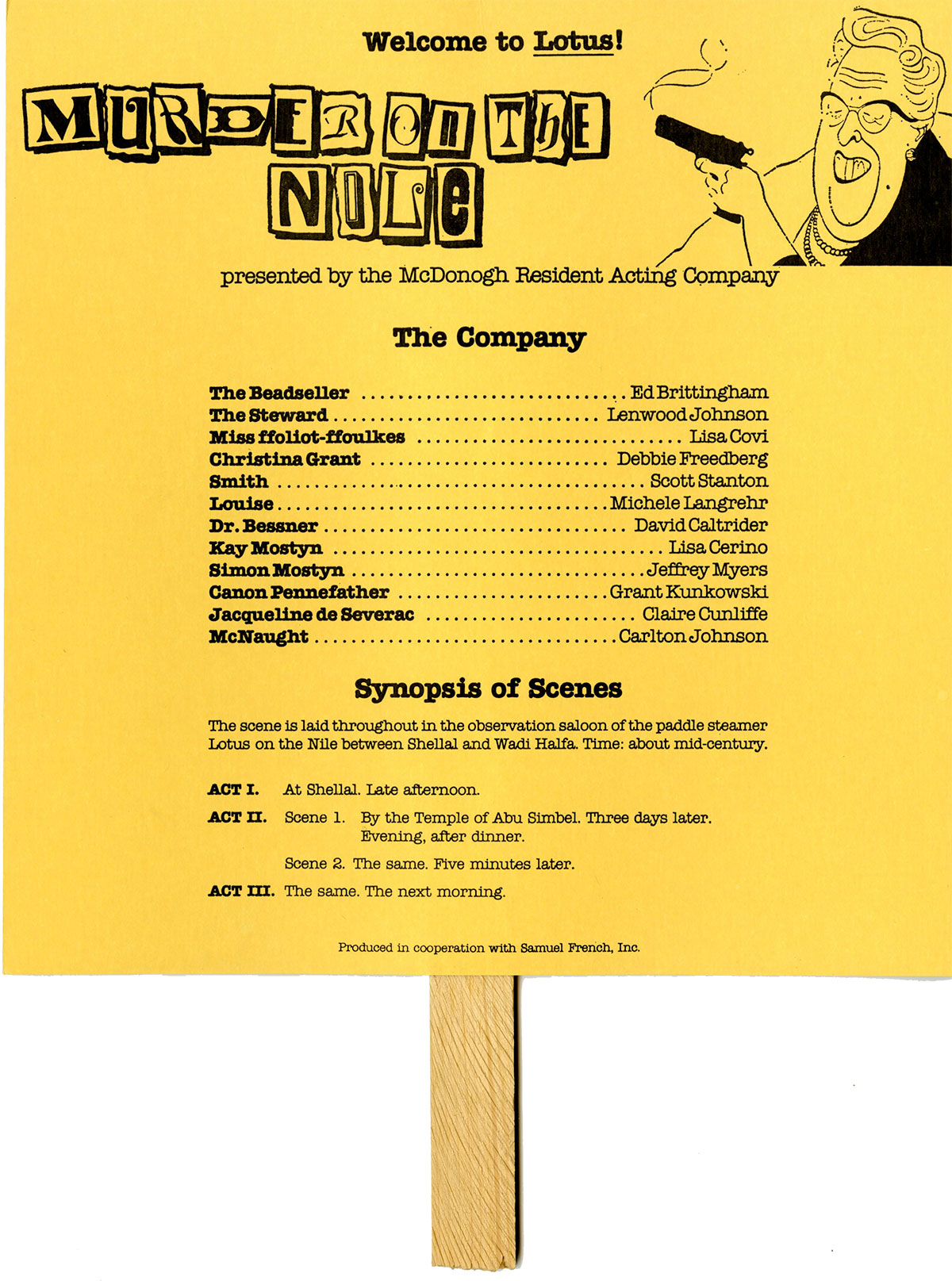
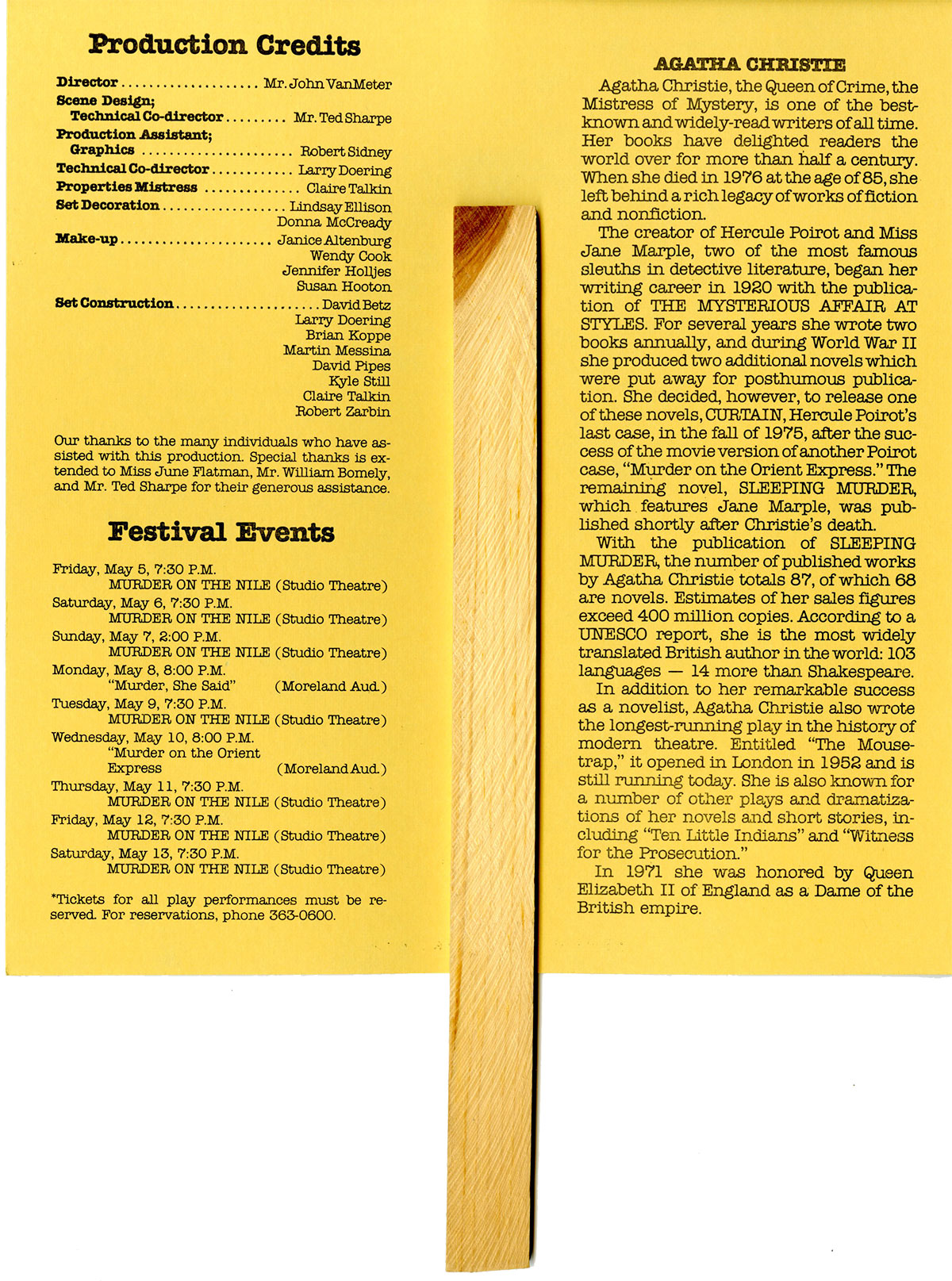
As part of the McDonogh School Agatha Christie Festival in 1978, the theater program put on a stage production of Murder on the Nile. The playbill for the production was designed as a hand fan to tie into the setting of the play. The Evening Sun, a Baltimore newspaper, advertised the play in an article on local school productions for the spring season in its edition on April 20, 1978. The festival took place in the Studio Theater and was led by longtime teacher John Van Meter who creatively reimagined everyday spaces as the backdrop for the performance; for example, Van Meter turned an Upper School teacher’s lounge in Edwards Gym into the Studio Theater. An icon of McDonogh theater, Van Meter’s former students remember him for pushing the theater program to new heights because he believed McDonogh was “too good not to be better.”
Purchase the 150th Anniversary Book
Becoming McDonogh School tells the captivating story of McDonogh’s first 150 years.
BUY NOW